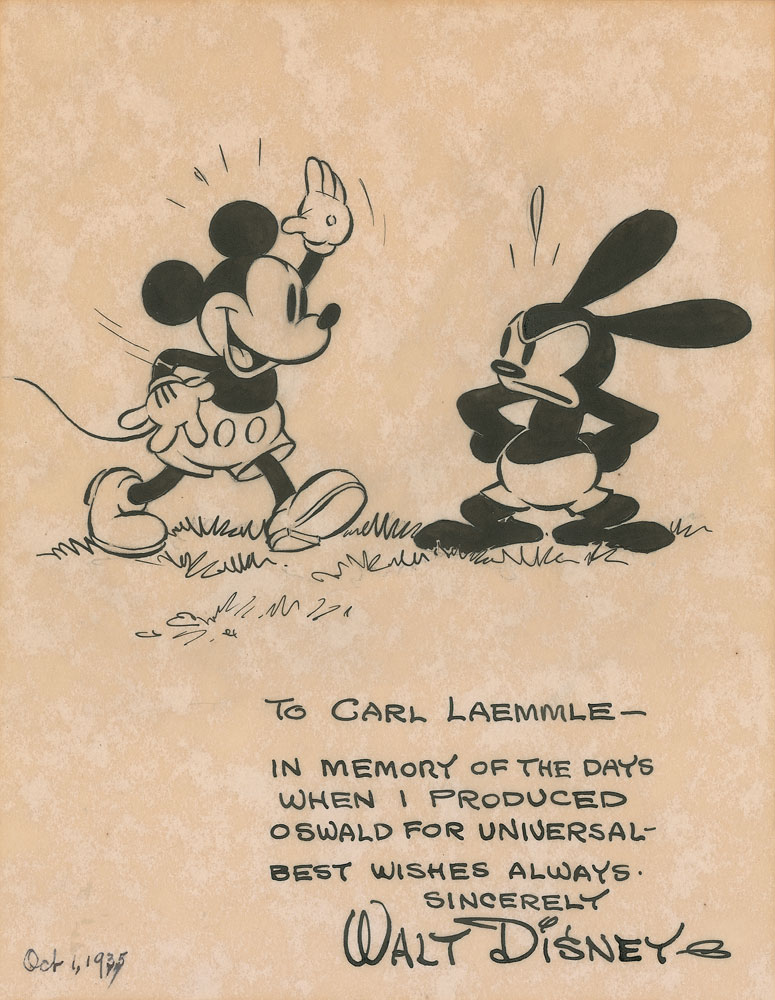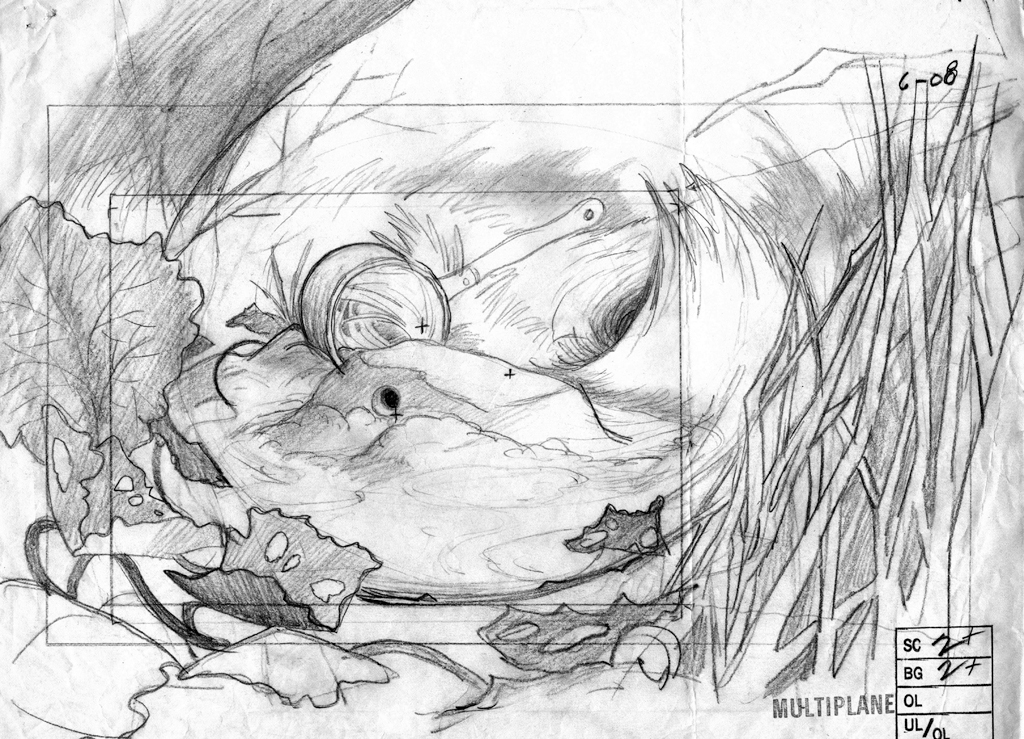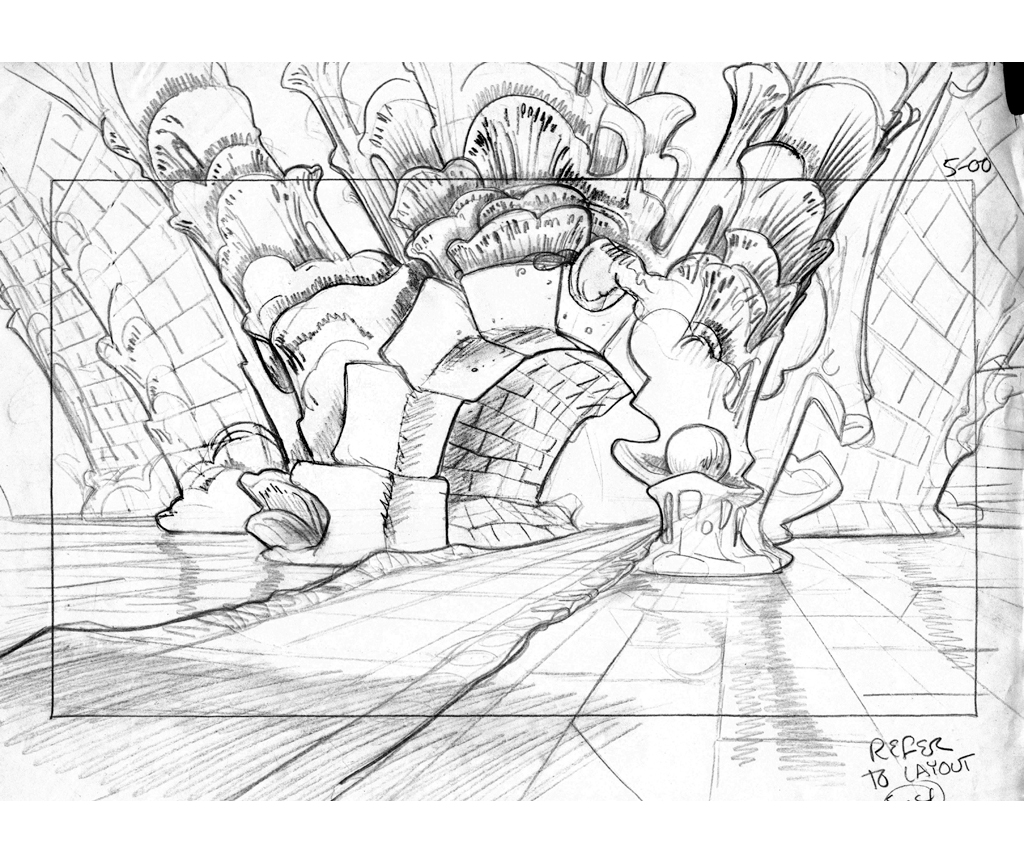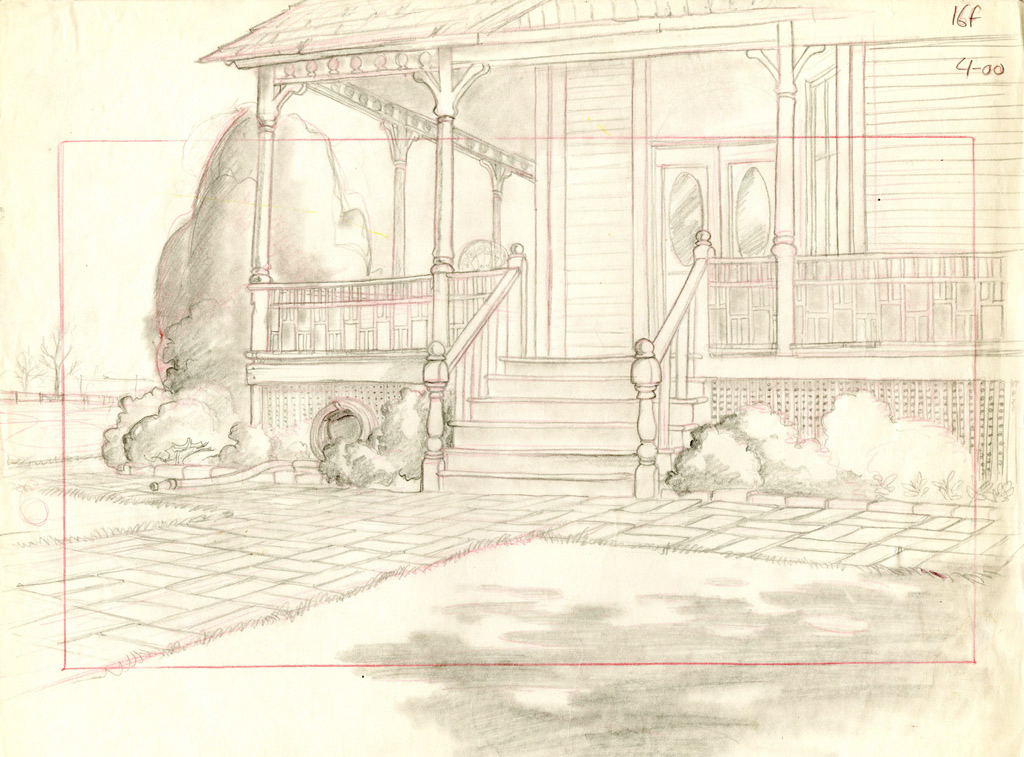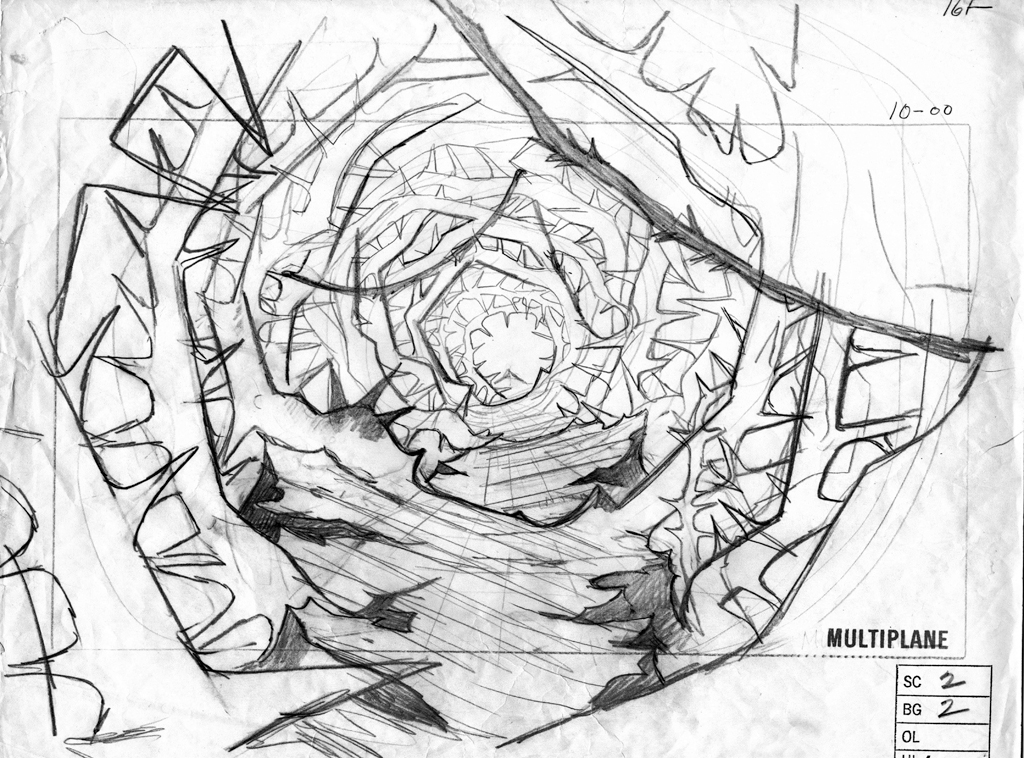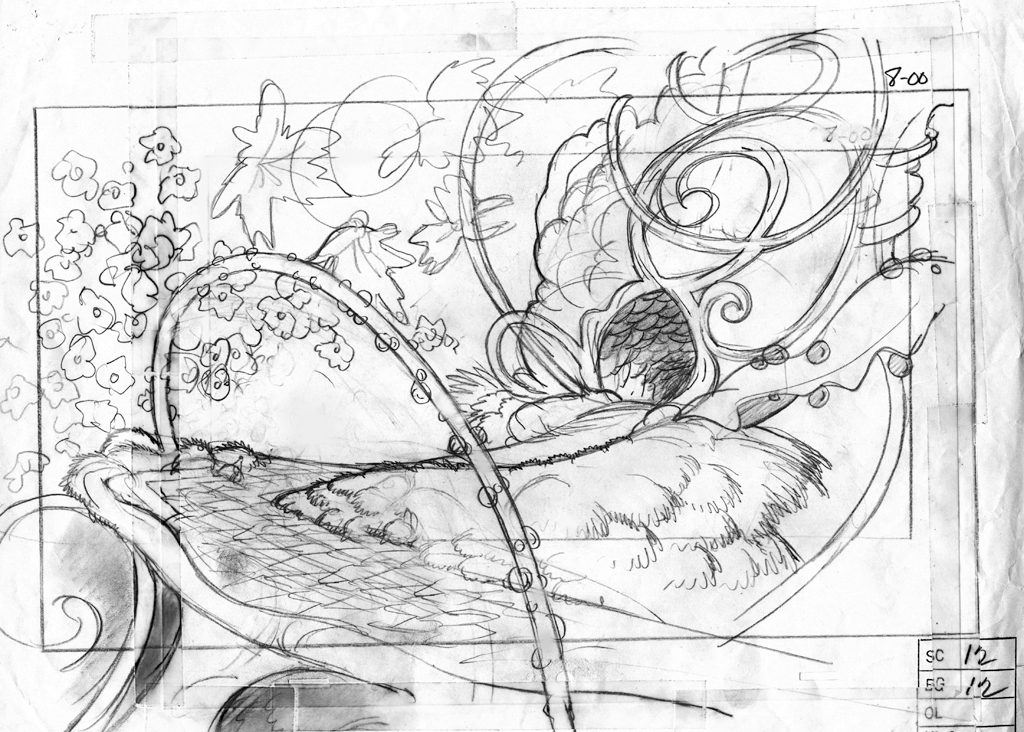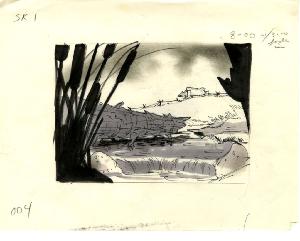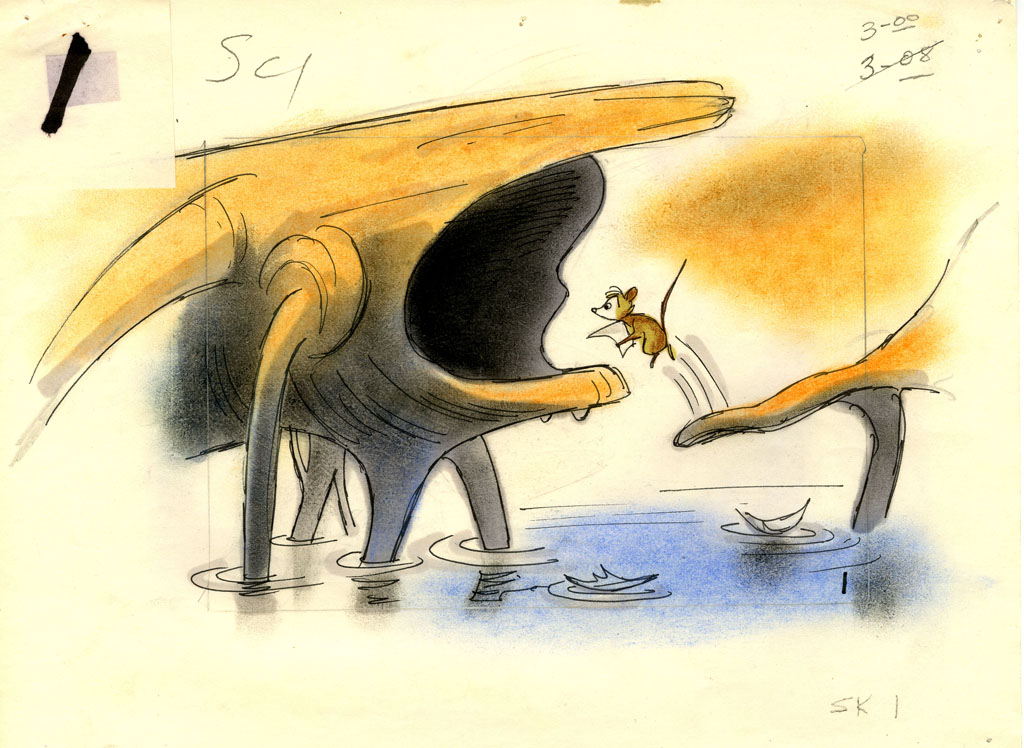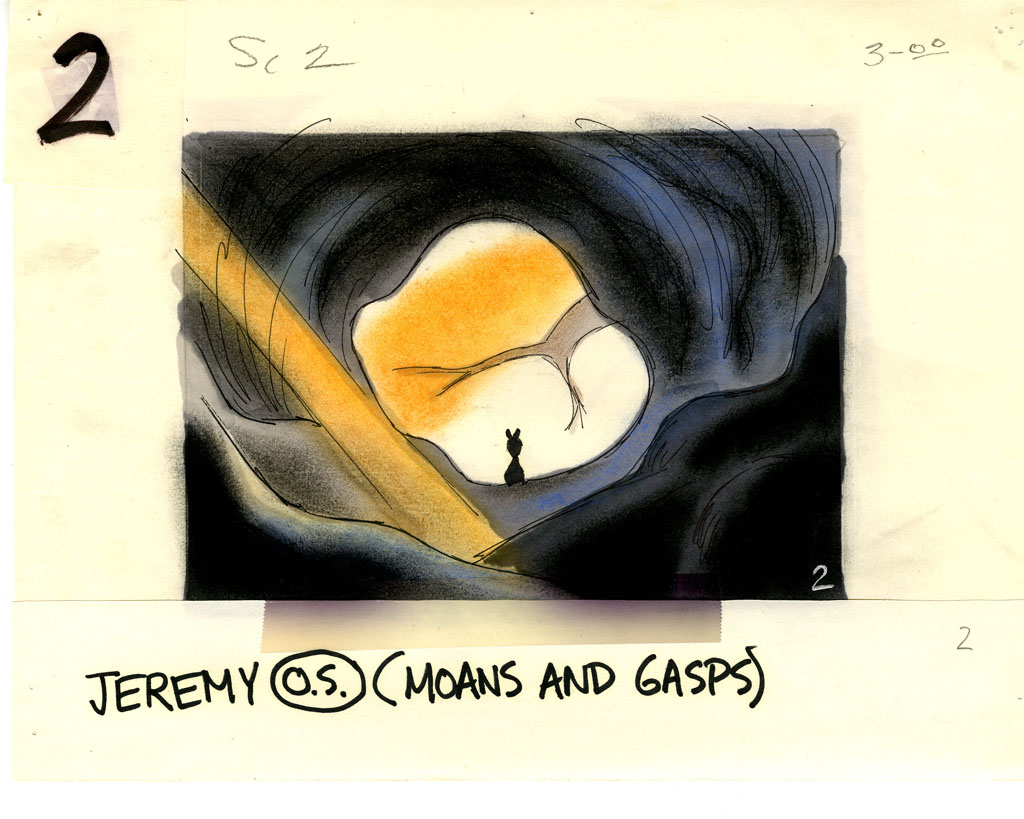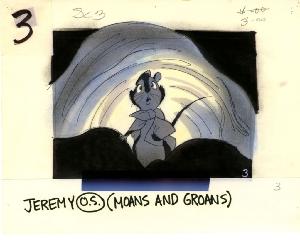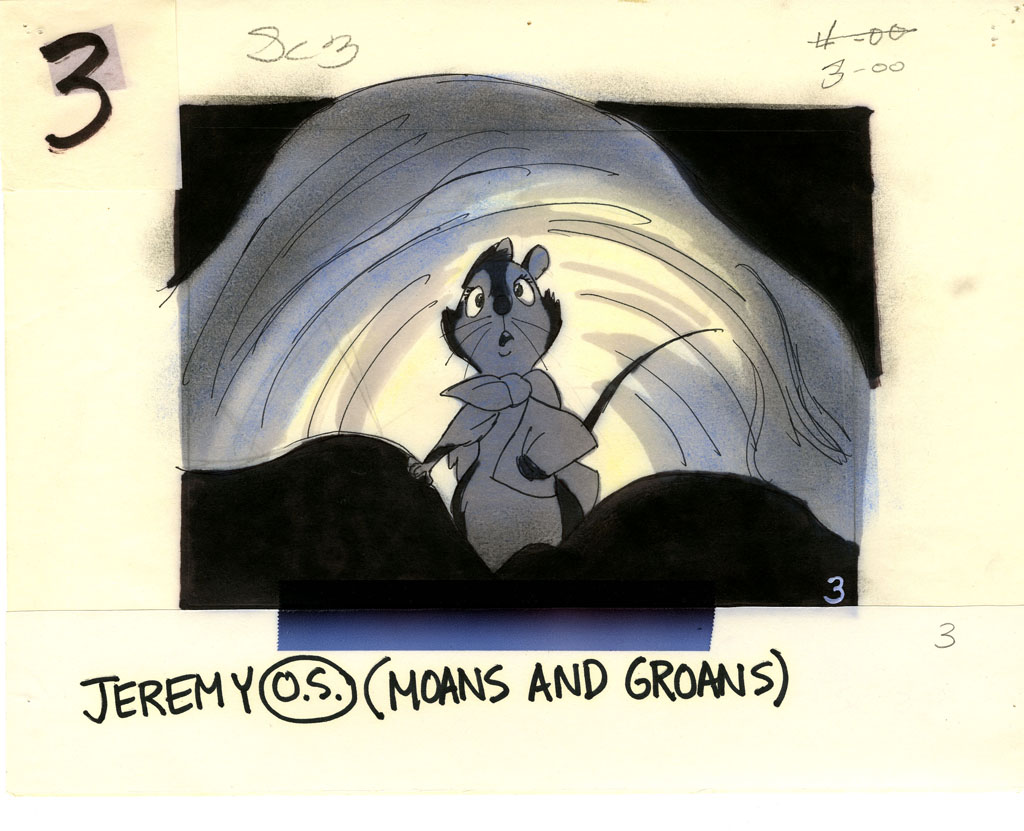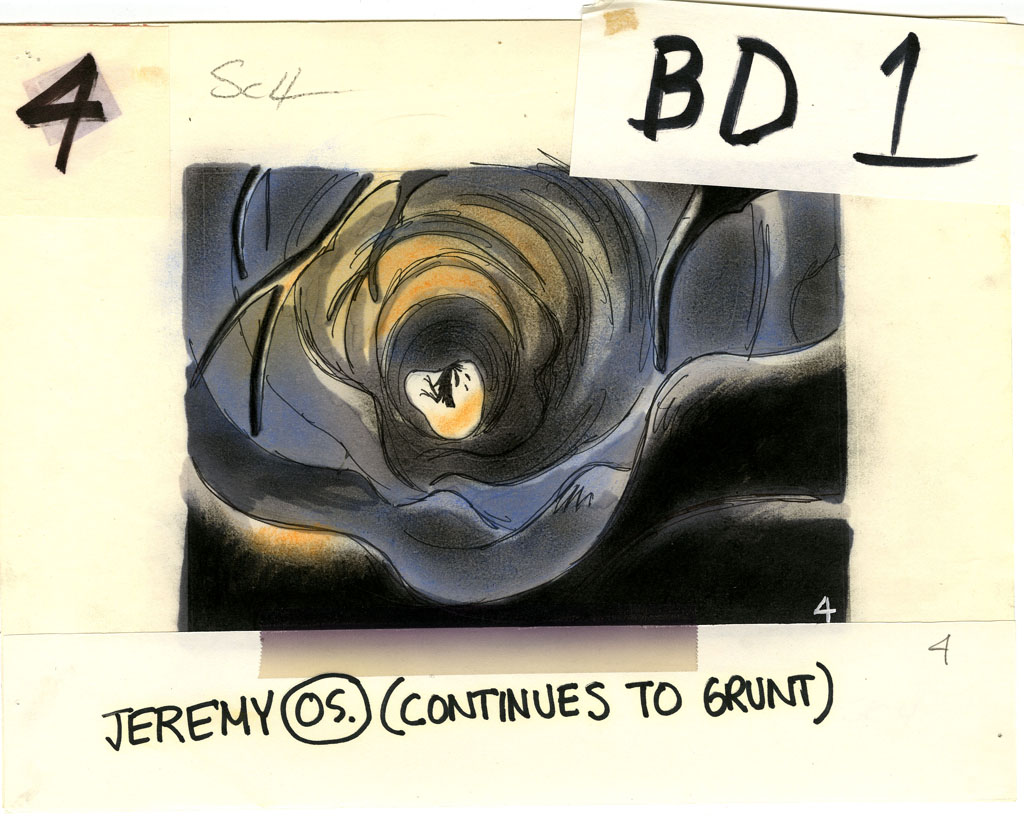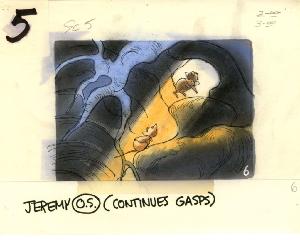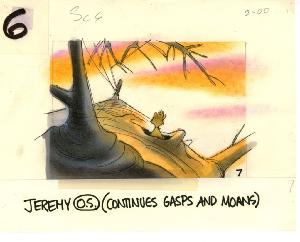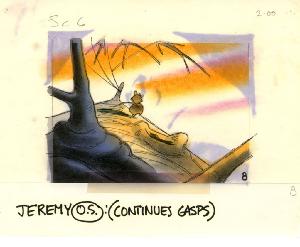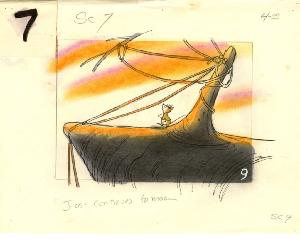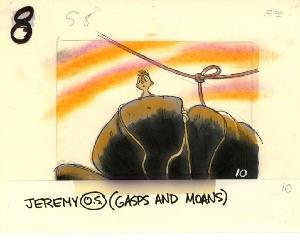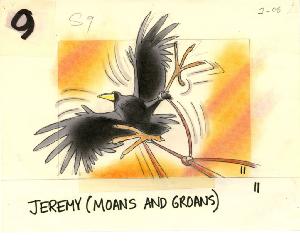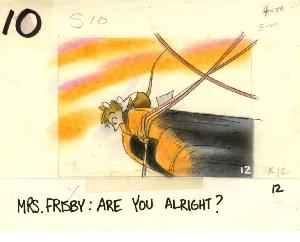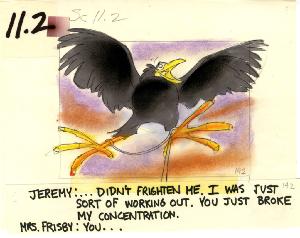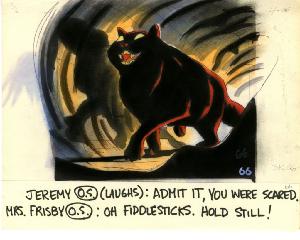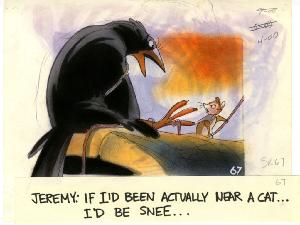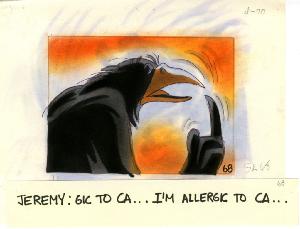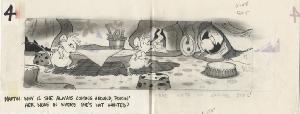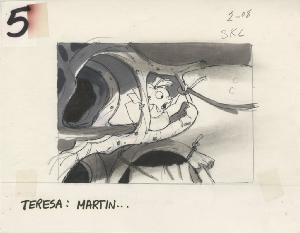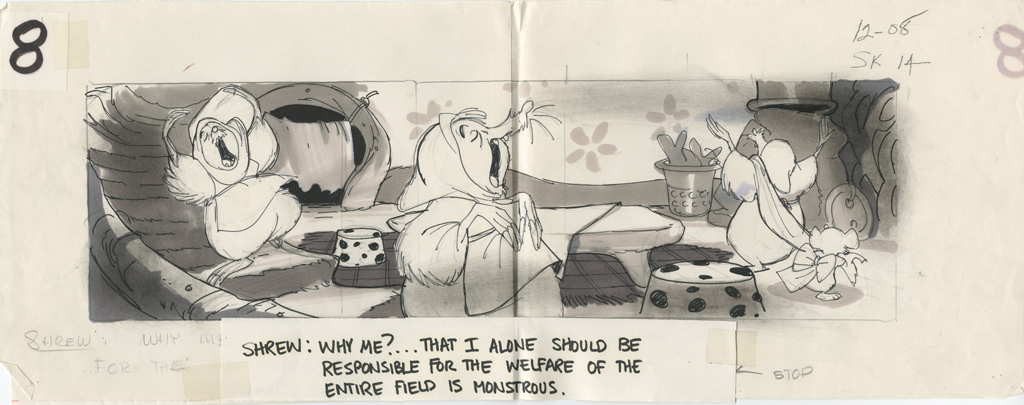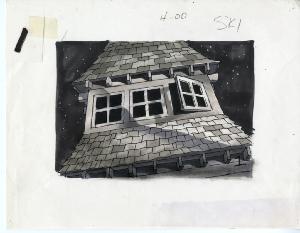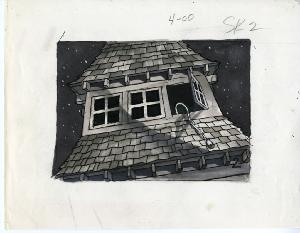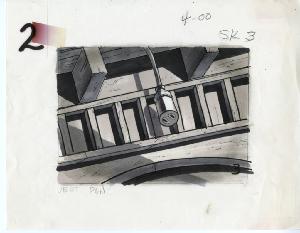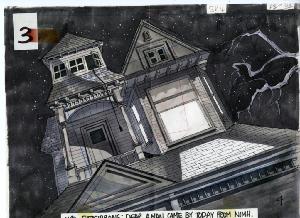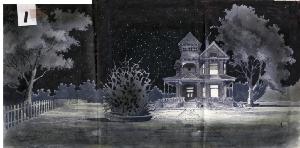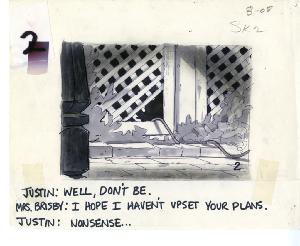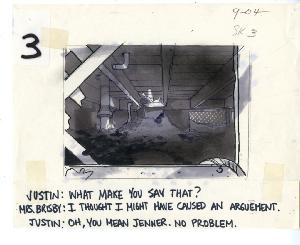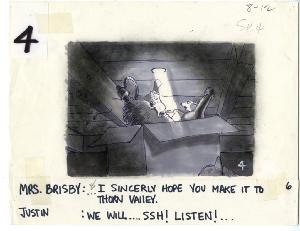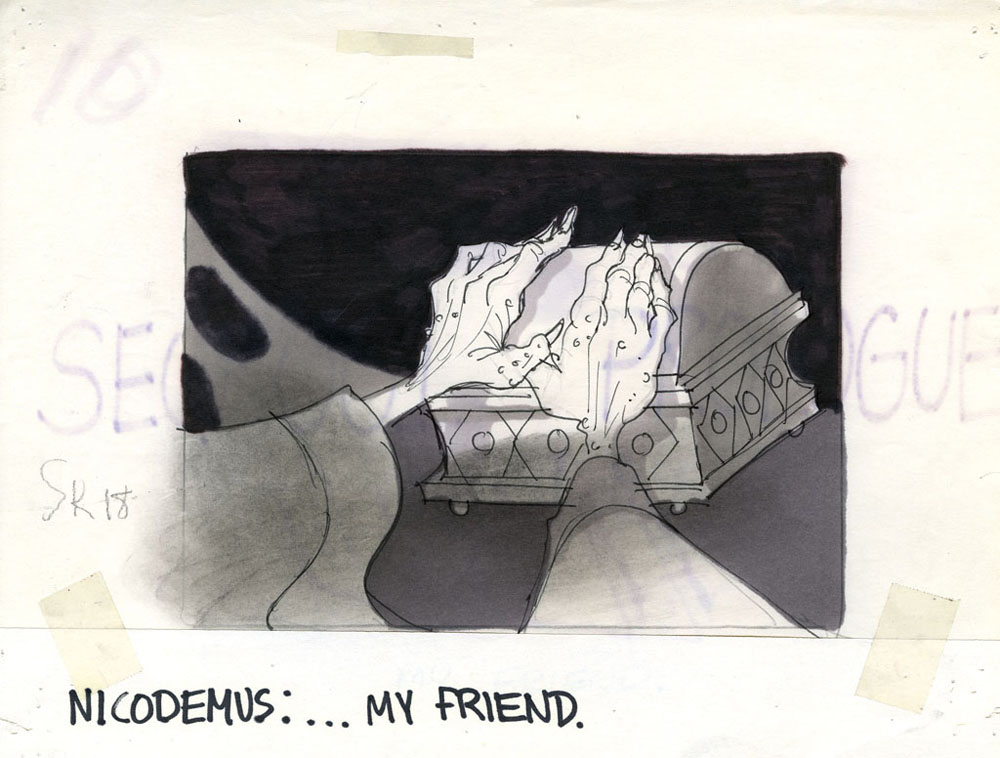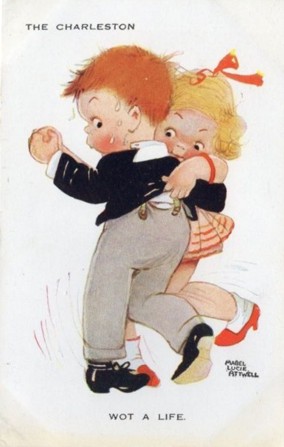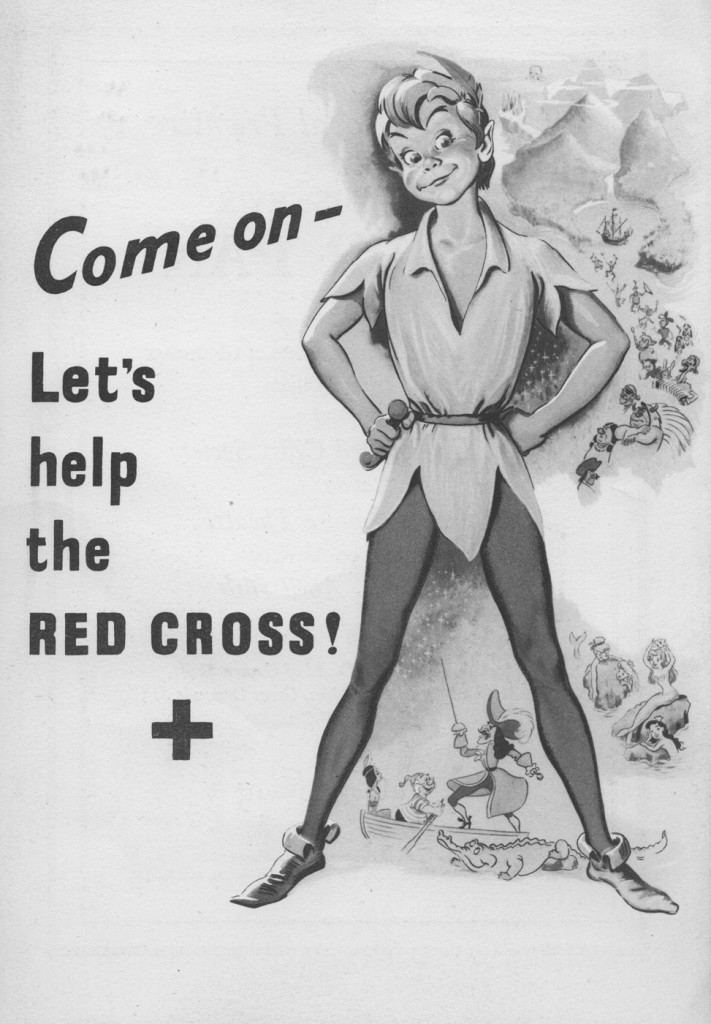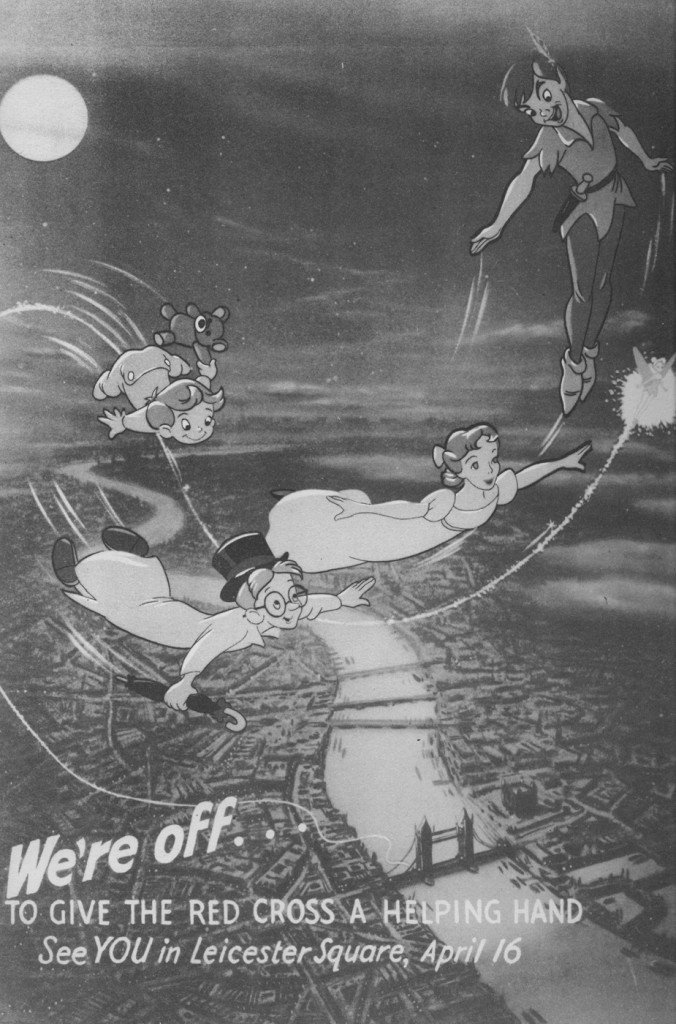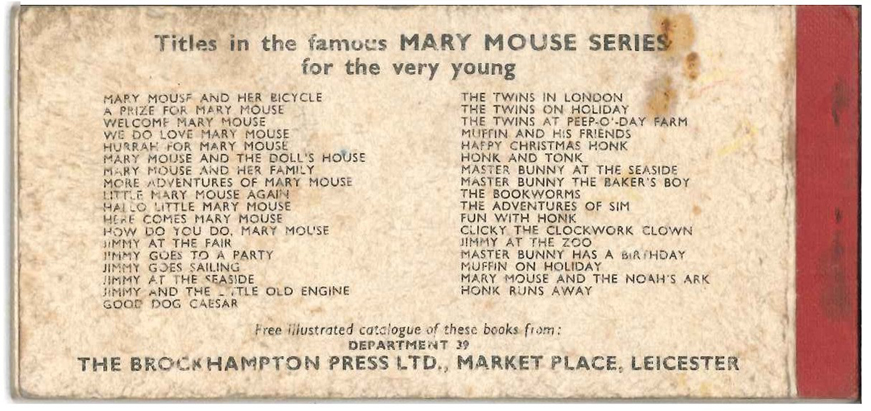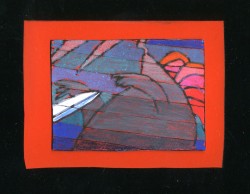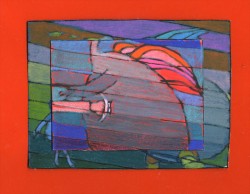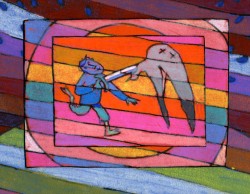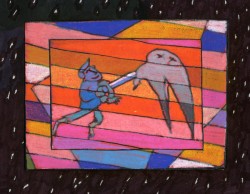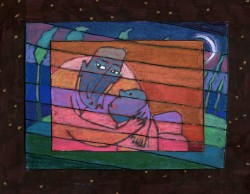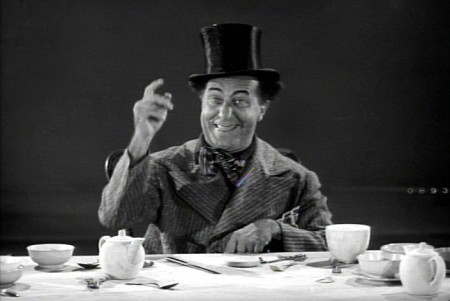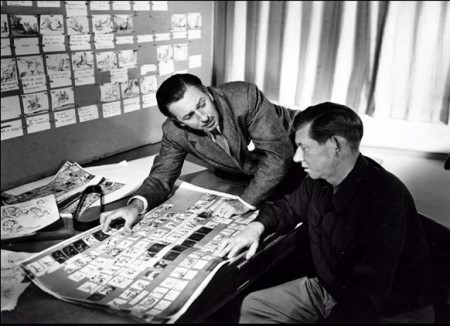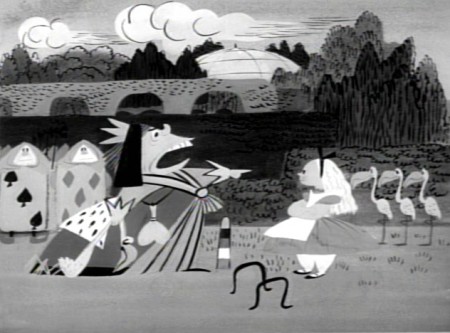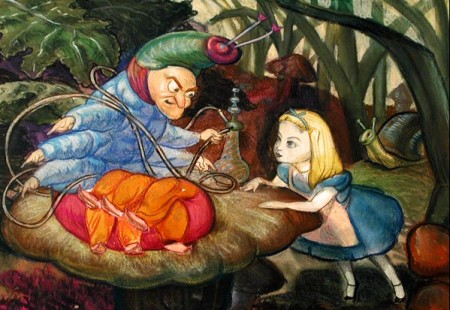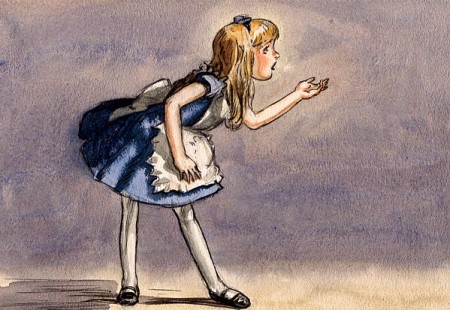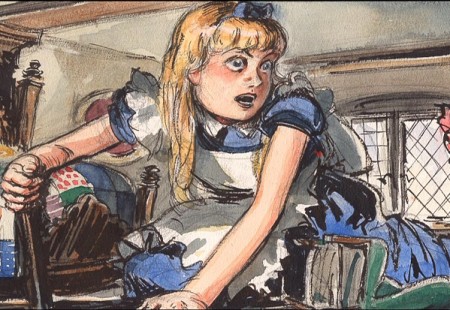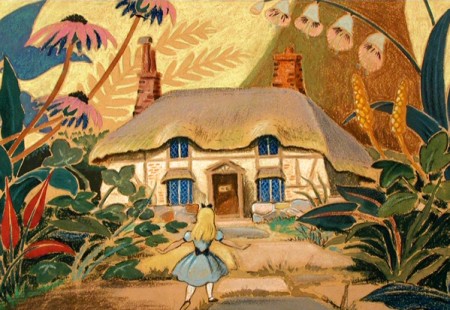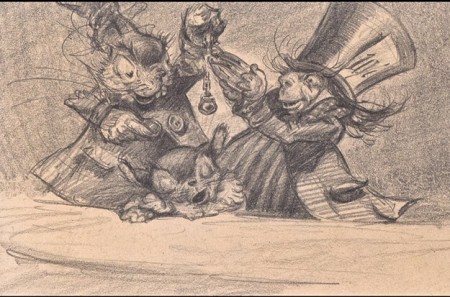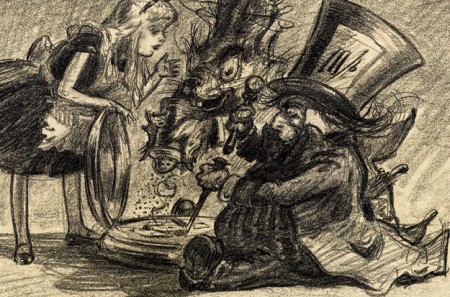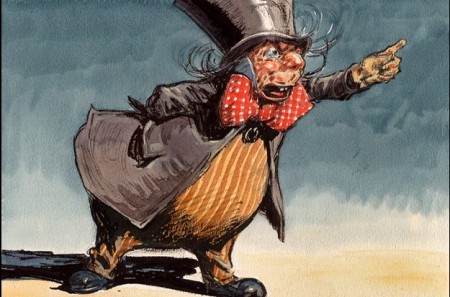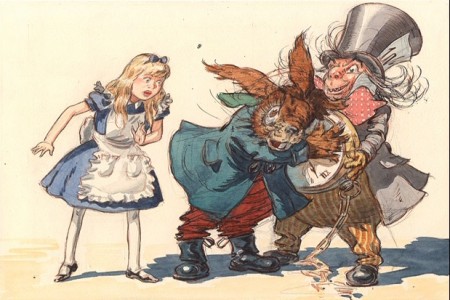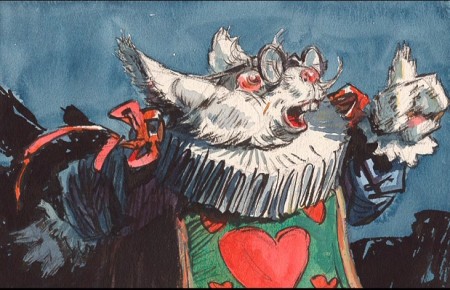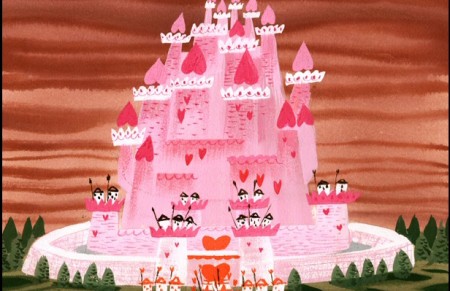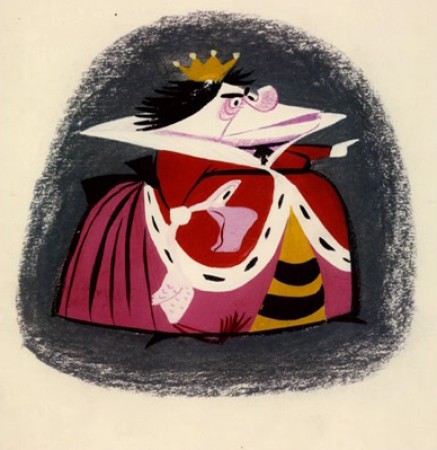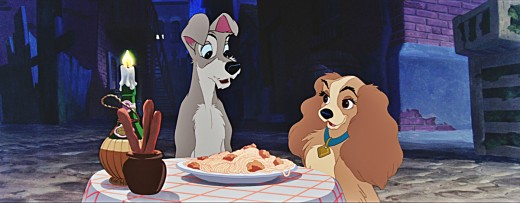Search ResultsFor "alice in wonderland"
Commentary 14 Jun 2013 11:17 pm
Huh?
.
I received this note from the “Wise Old Man” of Holland, Borge Ring, after I posted my piece about the Disney studio in the last days of the “Nine Old Men” – just before the new guys took ownership:
- hi MICHAEL
For you to add, share or ditch:
You touch upon top Walt Disney animators relaxing and losing their (story)mind
after Walt Disney died on them
I asked Marc Davis if Walt Disney’s death was followed by a period of
interregnum among the Nine Old Men.
Marc’s face turned sour
“Oh yes. There was no orderliness of production – Everybody did as they
pleased. Frank would go upstairs and take scenes that should’nt have been done
by HIM.”
greetz
Borge
Auto Boarded
.
 I must be getting old. I’ve gotten so tired of drawing storyboards, after all these years, that it came as a great relief to read that I no longer have to do all that arduous labor.
I must be getting old. I’ve gotten so tired of drawing storyboards, after all these years, that it came as a great relief to read that I no longer have to do all that arduous labor.
Now thanks to Amazon Storyteller (and the short description given by Amid Amidi from Cartoon Brew) the computer program will do the drawing for me. As the Amazon ad for the piece reads, “A storyboard can be 10 panels, or 100.” Once you place your “original script” into the program, designed and previously drawn characters will act out your script. All you have to do is add the script.
In a few days, Amazon Storyteller will rate your storyboard and tell you how good it is. (Just what I need, another boss.) This could be the start of something good.
All I need is Amazon Animator, so I don’t have to do that work either. I can just hire the machine to move my storyboard drawings with previously-animated scenes.
Movies
The films this week came fast and furious. It started with Sofia Coppola‘s latest film called The Bling Gang. Based on a true story, it’s about a group of teenagers in LA who sneak into and rob the houses of celebrated girls, such as Paris Hilton and Lindsay Lohan. Though we see alarms record the break ins and robberies, it takes a while for the police to investigate any of them. Eventually, all the teens are captured and end up in jail. You people living in LA can feel safe that they’re not out there to search your apartments for the latest in Laboutin shoes. Paris Hilton actually loaned her real home for the shooting.
The film feels a bit disinterested in the characters, and the whole thing feels a bit passive-aggressive. The best part of the film was that it ran quickly through its short 90 minute length.
Unfortunately, I forgot to bring my camera to photograph Sofia Coppola who came prepared to answer questions and whipped through those from moderator Brian Rose, a local film historian. Ms. Coppola does have a large and beautiful head, in the way of most stars. she reminds me a bit of Sophia Loren. Her interview will be on=line soon.
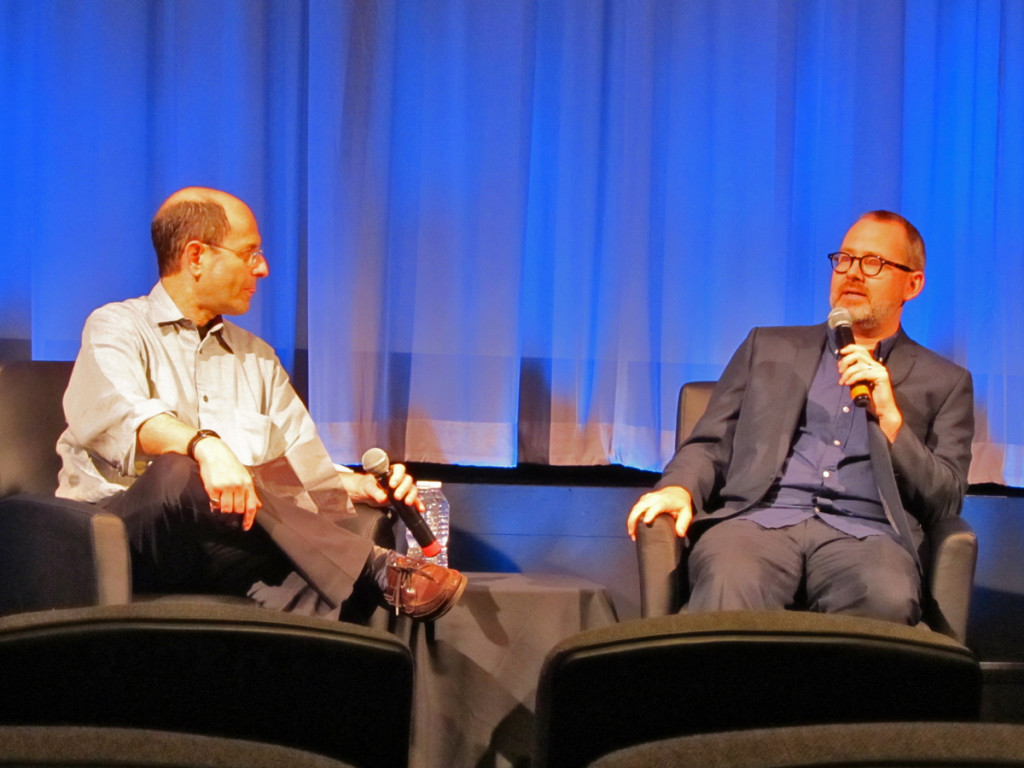 The next night brought a different kind of documentary, Twenty Feet from Stardom. It sounds like some kind of horror film, but it’s really about back-up singers. Their talent is obviously enormous, but stardom seemed to resist most of those on screen. It was nice to hear Bruce Springsteen and Sting talk about their back-up singers. Of course, the film was full of melody and had us dancing in or seats. Darlene Love is part time focus in the movie. Only after she’s working cleaning houses, does she gain respect for herself and her talent. She moves to New York where her career takes off, and she was a success story. She’s become a staple on the David Letterman
The next night brought a different kind of documentary, Twenty Feet from Stardom. It sounds like some kind of horror film, but it’s really about back-up singers. Their talent is obviously enormous, but stardom seemed to resist most of those on screen. It was nice to hear Bruce Springsteen and Sting talk about their back-up singers. Of course, the film was full of melody and had us dancing in or seats. Darlene Love is part time focus in the movie. Only after she’s working cleaning houses, does she gain respect for herself and her talent. She moves to New York where her career takes off, and she was a success story. She’s become a staple on the David Letterman
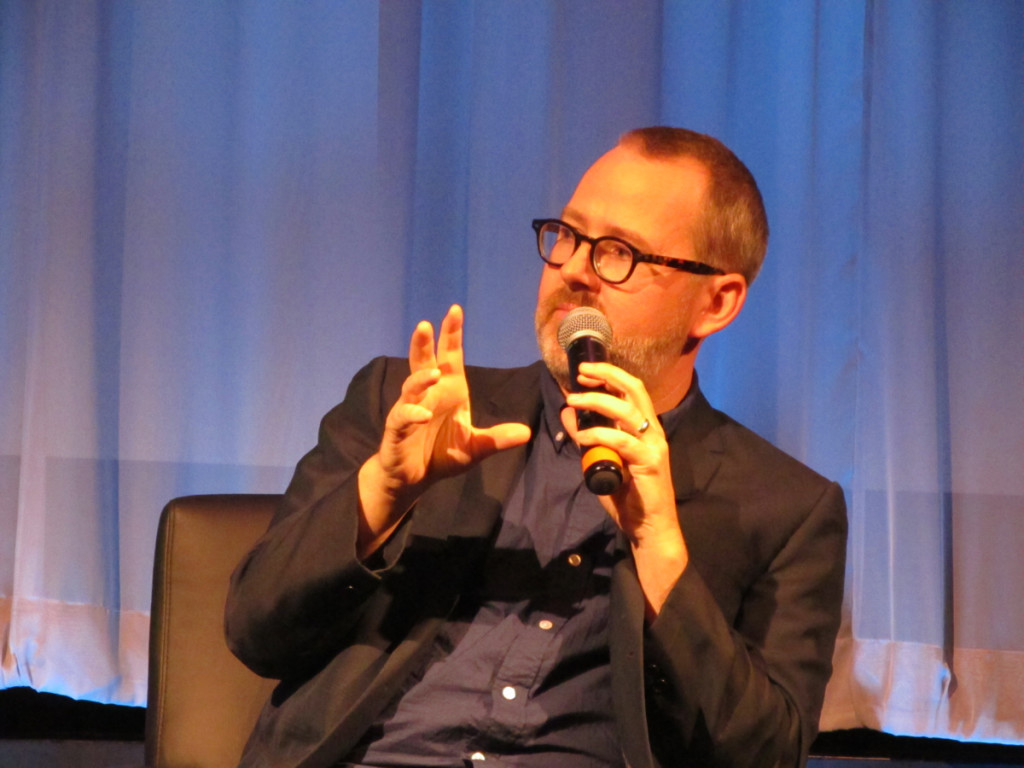 show every Christmas where she sings her hit, “Christmas (Baby, Please Come Home).” A very entertaining 90 minutes, the movie zipped along and told its story well. One wonders how the producers of this film were able to secure the rights to many of the songs that played out on the soundtrack, everything from “Space Oddity” to “Walk on the Wild Side” to “Lean on Me.” The post screening interview between director, Morgan Neville and Brian Rose also moved quickly.
show every Christmas where she sings her hit, “Christmas (Baby, Please Come Home).” A very entertaining 90 minutes, the movie zipped along and told its story well. One wonders how the producers of this film were able to secure the rights to many of the songs that played out on the soundtrack, everything from “Space Oddity” to “Walk on the Wild Side” to “Lean on Me.” The post screening interview between director, Morgan Neville and Brian Rose also moved quickly.
The Man of Steel was screened on Thursday evening. The latest adventures of Superman deal with his having to shave on Earth and his difficulties in getting a job prior to work at the Daily Planet.
There was no post-screening interview, but I’m not sure how interested I would’ve been in one.
Conversations
I’ve been talking about these post screening conversations for the pat few weeks, since the NY chapter of the Academy started scheduling them. These conversations have been placed on line and can be viewed if you’re interested. They’ve just posted the interview with Chris Wedge for his film, Epic. The virtual leader of Blue Sky talks about his film here.
RIP – Murray Rosen
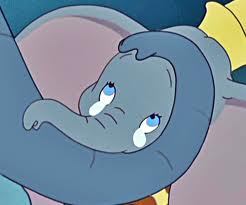 Cartoonist, Murray Rosen passed away this past week. Murray attended schools in New York City. Graduating from Pratt Institute, he went on to work for Walt Disney on Dumbo as a Cartoonist. He then returned to New York and worked for Famous Studios on Little Lulu and Popeye cartoons.
Cartoonist, Murray Rosen passed away this past week. Murray attended schools in New York City. Graduating from Pratt Institute, he went on to work for Walt Disney on Dumbo as a Cartoonist. He then returned to New York and worked for Famous Studios on Little Lulu and Popeye cartoons.
After marrying his wife, Shirley Binder on May 27, 1956, they moved to Maine where Murray operated an installation company for a friend’s storm window firm, remaining in the storm window business for 20 years. On May 8th, following a brief illness, he died with with his wife Shirley and friends at his side.
Current
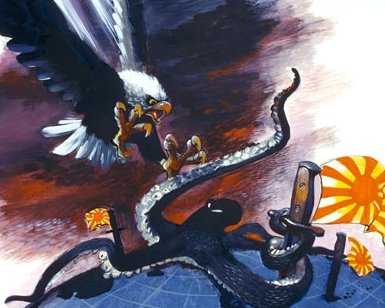 Recently, in response to Andreas Deja’s comment – on his own blog – he called the animation for 101 Dalmatians an excellent example of “Modern Anmation.” I commented on this use of “Modern Animation”, and was challenged by one of my readers. Andrea K. Haid wrote: “The reason that Andrea Deja calls 101 Dalmations “modern†is because it is set in a contemporary environment with contemporary music. It was the first story told in an animated feature by Disney to be placed in a modern setting with modern artwork.”
Recently, in response to Andreas Deja’s comment – on his own blog – he called the animation for 101 Dalmatians an excellent example of “Modern Anmation.” I commented on this use of “Modern Animation”, and was challenged by one of my readers. Andrea K. Haid wrote: “The reason that Andrea Deja calls 101 Dalmations “modern†is because it is set in a contemporary environment with contemporary music. It was the first story told in an animated feature by Disney to be placed in a modern setting with modern artwork.”
To this I began to think back on animated features that were more current than others and came away with a bit of surprise for myself.
Viewing the Disney features in chronological order:
Snow White, of course, operates within a Fairy Tale land.
Pinocchio also oerates within that world.
Fantasia is all over the place, so I ignore that one.
Bambi, however, is absolutely current. We see no clothing or hear no coversation, but it can be without doubt that the film takes place when it was made, 1942.
Dumbo, however, is very current. The people are dressed for 1942, the action takes place then. Even the fringes of the civil rights movement attest to the date of the story.
Victory Through AirPower takes place during WW2 and is immediate in its action. The film, itself, is an attempt to sell the idea of using aviation to help win the War.
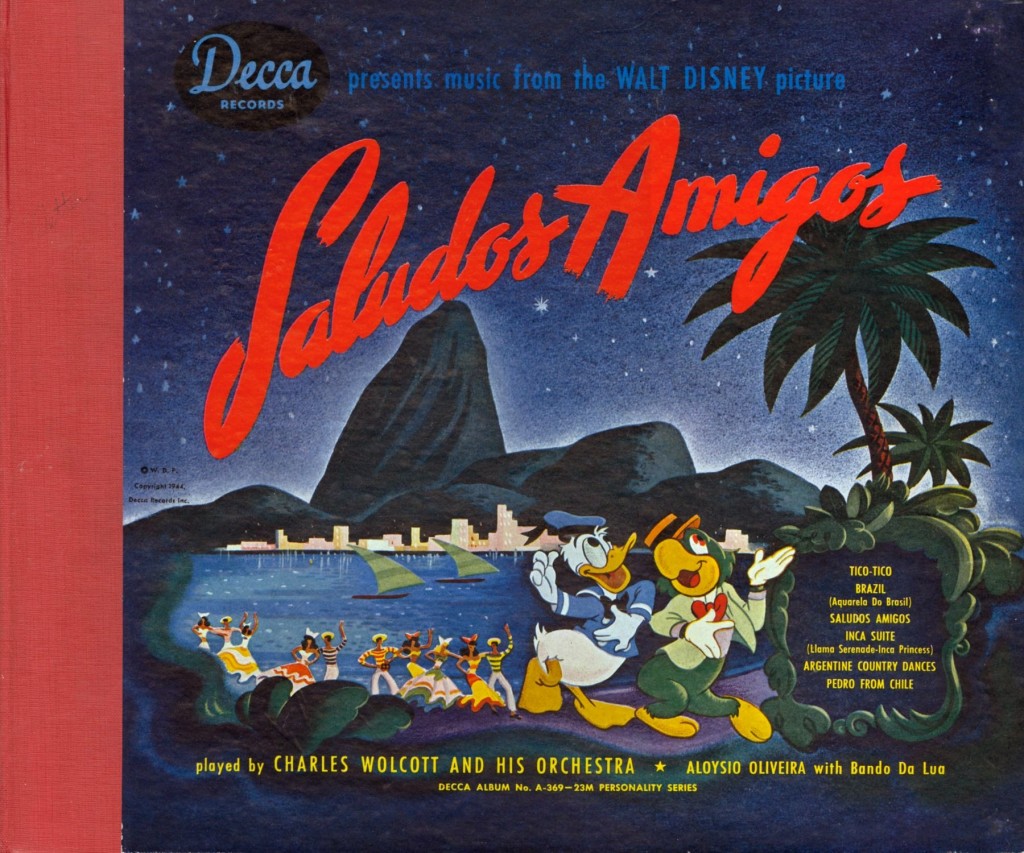 Of the package features, Saludos Amigos and Three Caballeros both take place currently. There could be no other approach in an attempt to melt the international curtains between North and South America.
Of the package features, Saludos Amigos and Three Caballeros both take place currently. There could be no other approach in an attempt to melt the international curtains between North and South America.
For the sake of this essay, I won’t analyze the shorts in the rest of the packaged films. The Headless Horseman, The Wind in the Willows, are probably dated. While other shorts like Little Toot, Trees and Bongo are all current. They’re not worth defending.
Cinderella was 18th Century fairy tale land.
Peter Pan and Alice In Wonderland were 19th Century.
Sleeping Beauty, to the 17th Century fairy tale world.
Lady and thte Tramp back to the early 20th Century.
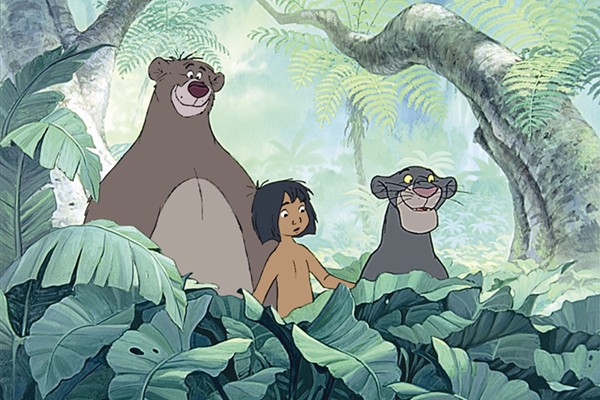 That brings us to 101 Dalmatians. Modern humans and dogs in modern dress.
That brings us to 101 Dalmatians. Modern humans and dogs in modern dress.
Sword in the Stone was 16th Century England.
The Jungle Book was 19th Century, per Rudyard Kipling.
The Aristocrats was early 20th Century. (There were cars.)
Robin Hood was 17th Century England.
Let’s skip to the new generation of animators:
Toy Story 1, 2, & 3 were all today.
As was The Rescuers and The Rescuers Down Under. The UN is there, for pete’s sake.
Basil of Baker”s Street dated. The Fox and the Hound, current.
Beauty and the Beast, Aladdin, Hunchback of Notre Dame and Pocahontas were all hundreds of years old.
I don’t think I need go on. We are into “Modern Animation” and I think it has nothing to do with what period the film is set in.
CitiBikes
You step out onto the street on Monday, and you’re greeted by a hundred blue bikes. Sort of the same color as the lines on this page. I wasn’t expecting it. No double-parked cars.
The Citi decided that it’d be better for me if I took a bike. Rent the bikes for 2 minutes, then roll to the next check-in point. You pay some bucks and you take the biks. (They don’t offer bike-helmets for the softer-brained, accident-prone people. There’s just a lot of info about the fines you’ll pay if you go over the twenty minute rental time.
Last weekend everybody wanted a bike. (Aren’t they all girls’ bikes? What’s up with that?) They were all rented by couples speaking non-English. (A tourist thing, undoubtedly.) Only two gone so far this weekend. Meanwhile, no one has a parking space. At first I thought they were mopeds, like in Europe. We’d be hearing buzzing all day long in conjunction with the square jeep-type taxis.
We’ll see how it goes, though. No buzzing, a crash of cerulean blue, and lots of tourists reading the signs in groups of about eight.
Jerry’s Visit and a Great Film Program
This is a note I received from Jerry Beck. It doesn’t take place until the end of July, but thought you’d like some advance notice, now.
- I don’t know if you usually attend the Animation Block Party in Brooklyn,
but this year I’m going to come back to New York and introduce
a screening of Oscar winning shorts on Sunday night July 28th at 7pm
Munro / Gene Deitch / 8:20 min / 1960
Ersatz (The Substitute) / Dušan Vukotić / 10 min / 1961
The Hole / John Hubley and Faith Hubley / 15 min / 1962
The Critic / Ernest Pintoff / 4 min / 1963
The Pink Phink / Friz Freleng and Hawley Pratt / 6:38 min / 1964
Dot and the Line: Romance in Lower Mathematics / Chuck Jones & Maurice
Noble / 10 min /1965
Herb Alpert & the Tijuana Brass Double Feature / John Hubley / 6 min / 1966
The Box / Fred Wolf / 9 min / 1967
After the films I’m hoping to lead a 15-20 minute panel discussion about these films, and the Oscars, and the filmmakers… etc. I do not know who Animation Block Party are asking to be a part of it, but I thought I’d reach out to you myself – as an actual Oscar nominee, you’d be a great addition to the discussion.
I completely understand if you cannot attend, but I thought it was worth a shot.
Event is at Brooklyn Academy of Music (BAMcinématek) located at 30 Lafayette Ave, Brooklyn.
Books &Commentary 13 May 2013 05:36 am
Illusions of Thomas, Johnston & Disney
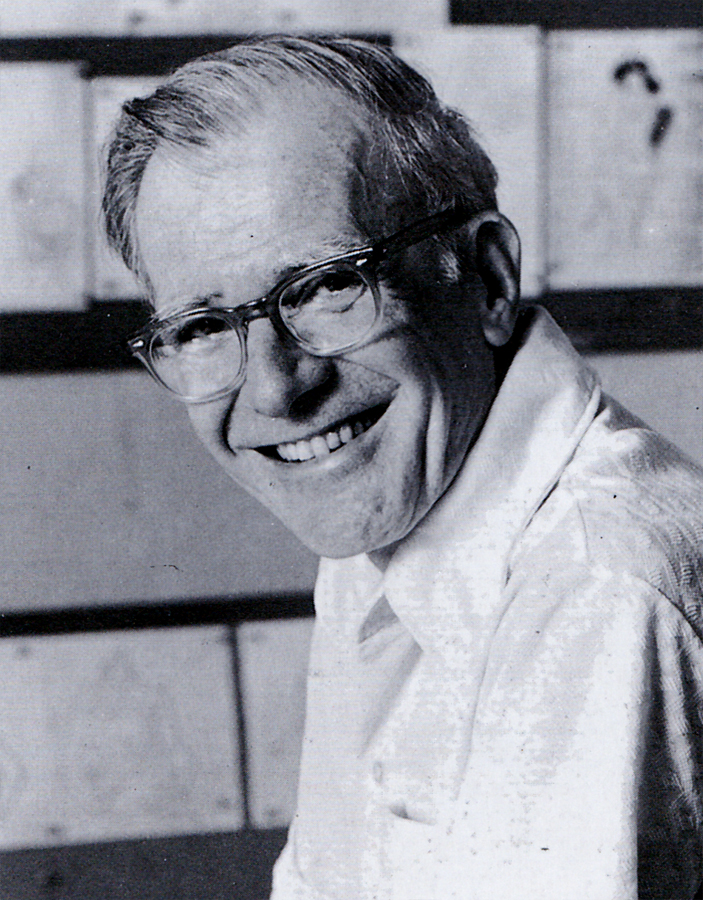 - The Illusion of Life by Frank Thomas and Ollie Johnston was first published in 1981. The book came out with a large splash and overwhelming acceptance by the animation community. It’s since remained the one bible that animation wannabees turn to as a source of inspiration and an attempt to learn about that business.
- The Illusion of Life by Frank Thomas and Ollie Johnston was first published in 1981. The book came out with a large splash and overwhelming acceptance by the animation community. It’s since remained the one bible that animation wannabees turn to as a source of inspiration and an attempt to learn about that business.
I admitted a couple of weeks back that though I must have been one of the very first to have bought the book, I’d never actually read it. I spent hours poring over the many pictures and the extensive captions, but the actual book – I didn’t read it. I can’t say why, but this was my reality.
Then not too long ago, Mike Barrier wrote that he was not a supporter of the book and its theories, I wondered about that writing and decided to reconsider reading it. I knew I had to go back to find out what I’d stupidly ignored, so I started reading.
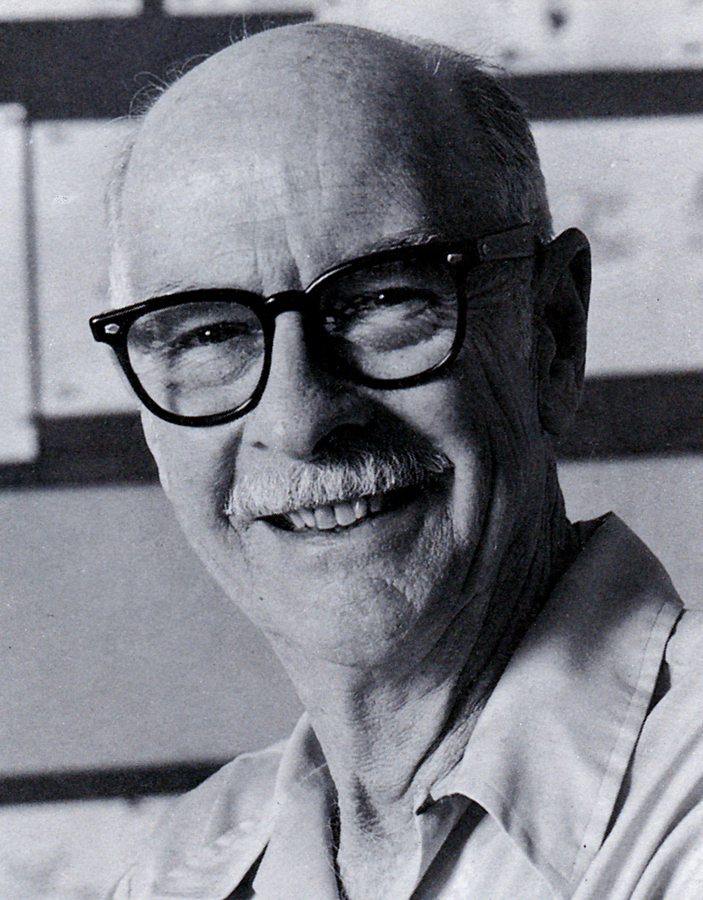
The book starts out with a lot of history of animation, something routine and expected from the two animators that lived through a good part of the story. As a matter of fact Thomas and Johnston were at the center of the history. It didn’t take long for the animation “how-to” to kick in. For the remainder of the book, using that history, the two master animators explained how and why Disney animation was done, in their opinions. They write about processes and systems set up at Disney during their tenure there. They write about theories and methods of fulfilling those theories. There’s a lot for them to tell and they’ve succinctly organized it into this book, as a sort of guide.
However, at two points they go wildly into a divergent path from the one that they started building. Their methods altered and, to me, seemed to be about the finances of doing the type of animation they did, rather than the reason. Impractical as those original theories were, I’d believed in the myth all those years to start changing now. So I want to review these two stances instead of outwardly reviewing the book. Besides it’s too long since the book has stood in its own royal space for me to pretend that I could properly review it.
The growth of animators at the Disney studio relied on a system wherein each of the better animators was assigned one character. Unless there was a minimal action by some external character, the one animator ruled over the character.
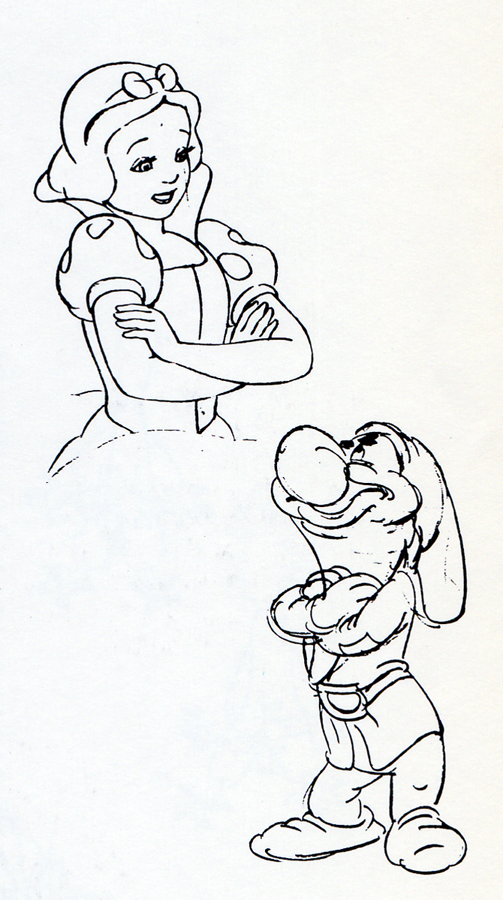 - Bill Tytla did Stromboli in Pinocchio. He did principal scenes of Dumbo in that film. He handled the Devil in Fantasia (as well as all his twisted mignons within those scenes.) Tytla worked on the seven dwarfs but was the principal animator of Grumpy.
- Bill Tytla did Stromboli in Pinocchio. He did principal scenes of Dumbo in that film. He handled the Devil in Fantasia (as well as all his twisted mignons within those scenes.) Tytla worked on the seven dwarfs but was the principal animator of Grumpy.
- Fred Moore also did the dwarfs in Snow White but seemed to focus on Dopey. He did Lampwick in Pinocchio and Mickey in The Sorcerer’s Apprentice.
- Marc Davis started as an assistant under Grim Natwick on Snow White. He became the Principal artist behind Bambi, the young deer. He did Alice in Alice in Wonderland, Tinkerbell in Peter Pan, Maleficent in Sleeping Beauty and Cruella de Ville in 101 Dalmatians.
- Frank Thomas did Captain Hook in Peter Pan, the wicked Stepmother in Cinderella, Bambi and Thumper on the ice in Bambi.
- Ham Luske and Grim Natwick did Snow White. The two sides of her personality came about because of conflicts between the two animators. This was a way for Walt to complicate Snow White’s character; he employed two animators with different strong opinions about her movement. By putting Ham Luske in charge, he was sure to keep the virginal side of Snow White at the top, but by having Natwick create the darker sides of the character, Disney created something complex.
Many animators fell under these leaders’ supervision and tutelage, also working on one principal character in each film. This system was something they swore by and broadcast as their way of working at the studio. It would allow the individual characters to maintain their personalities as one animator led the way.
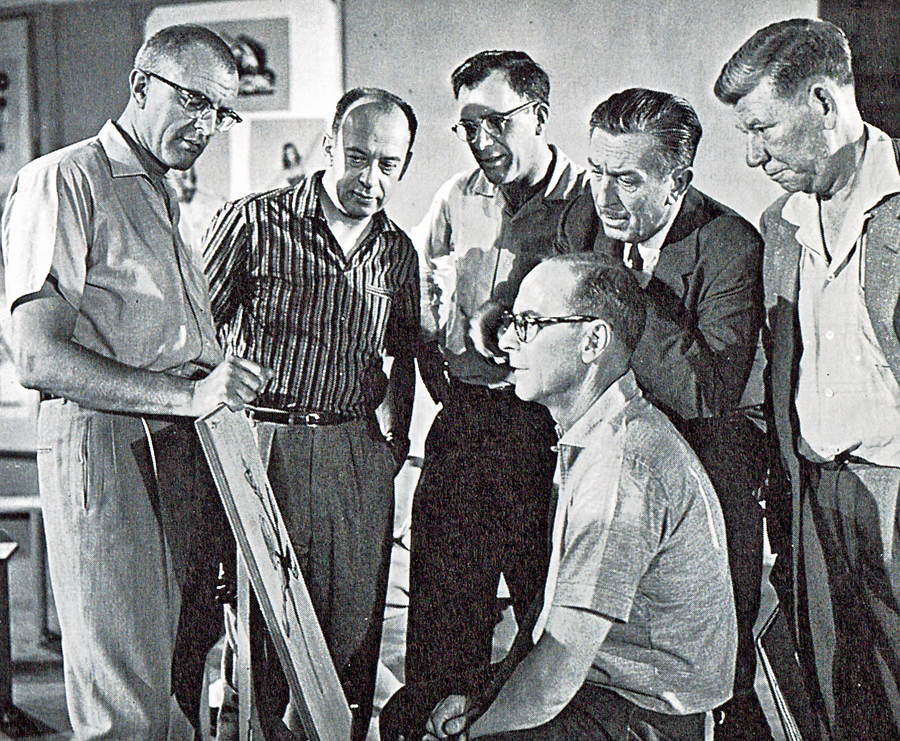 But as Walt grew more involved with his theme park and his television show and the live action movies that were doing well for the studio, things changed at the animation wing of the studio. It became clear, with the over budgeted spending on Sleeping Beauty and the new demands for a different look once xerography entered the picture in 1959. The rhythm and personality of the productions changed, and their methods of animation changed. Walt also sorted out nine loyalists to be his “Nine Old Men” thus dividing the animators into groups, a hurtful way of setting up competition among the animators. ________________________Kahl, Davis, Thomas, Walt, Jackson, Johnston seated
But as Walt grew more involved with his theme park and his television show and the live action movies that were doing well for the studio, things changed at the animation wing of the studio. It became clear, with the over budgeted spending on Sleeping Beauty and the new demands for a different look once xerography entered the picture in 1959. The rhythm and personality of the productions changed, and their methods of animation changed. Walt also sorted out nine loyalists to be his “Nine Old Men” thus dividing the animators into groups, a hurtful way of setting up competition among the animators. ________________________Kahl, Davis, Thomas, Walt, Jackson, Johnston seated
Thomas and Johnston get to justify this
in their book.
Let me read a section from the book to you:
- “Under this leadership, a new and very significant method of casting the animators evolved: an animator was to animate all the characters in his scene. In the first features, a different animator had handled each character. Under that system even with everyone cooperating, the possibilities of getting maximum entertainment out of a scene were remote at best. The first man to animate on the scene usually had the lead character, and the second animator often had to animate to something he could not feel or quite understand. Of necessity, the director was the arbitrator, but certain of the decisions and compromises were sure to make the job more difficult for at least one of the animators.
“The new casting overcame many problems and, more important, produced a major advancement in cartoon entertainment: the character relationship. With one man now animating ever character in his scene, he could feel all the vibrations and subtle nuances between his characters. No longer restricted by what someone else did, he was free to try out his own ideas of how his characters felt about each other. Animators became more observant of human behavior and built on relationships they saw around them every day.”
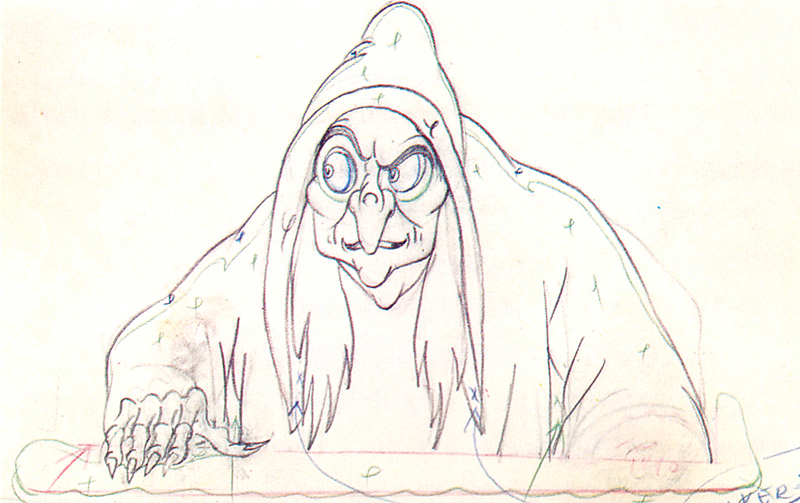 The question is, now, what are we to make of this statement? Do Thomas & Johnston mean for us to believe that they do more than the single character per film? Does it mean that, like all underprivileged animators everywhere, they now receive scenes rather than characters? Are they trying to tell us that the old, publicized method of animation they did during the “Golden Days” no longer exists?
The question is, now, what are we to make of this statement? Do Thomas & Johnston mean for us to believe that they do more than the single character per film? Does it mean that, like all underprivileged animators everywhere, they now receive scenes rather than characters? Are they trying to tell us that the old, publicized method of animation they did during the “Golden Days” no longer exists?
To be honest I don’t know. Also when are they talking about? At the start of the Xerox era? In the days since Woolie Reitherman has been directing? Do they mean ever since they’ve retired and started writing this book?
Let’s go back a bit.
- In 101 Dalmatians, Marc Davis did Cruella de Vil. That’s it. That’s all he was known for in that film. Oh wait, there were a couple of scenes where he did the “Bad’uns,” Cruella’s two sidekicks. He did these ging into or out of a sequence. In Sleeping Beauty (if we’re going back that far) Davis did Maleficent. Oh, he also did her raven sidekick.
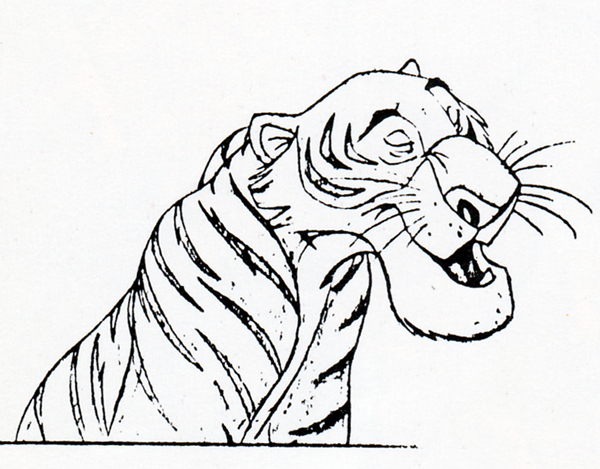 - Milt Kahl did Prince Philip in Sleeping Beauty – and every once in a while his father. He did key Roger and Perdita scenes in 101 Dalmatians. He did Shere Khan in The Jungle Book.
- Milt Kahl did Prince Philip in Sleeping Beauty – and every once in a while his father. He did key Roger and Perdita scenes in 101 Dalmatians. He did Shere Khan in The Jungle Book.
Kahl also seems to be the go-to-guy when they’re looking to have the character defined. The closest thing to Joe Grant’s model department in the late Thirties. If you weren’t sure how Penny might look in a particular scene, you might go to Kahl who’d draw a couple of pictures for you. But that was Ollie Johnston‘s character. You’d probably go to him first, but Johnston would go to Kahl if he needed help.
Kahl also did Robin and some of Maid Marian in Robin Hood. I could keep going on, but let’s take a different direction.
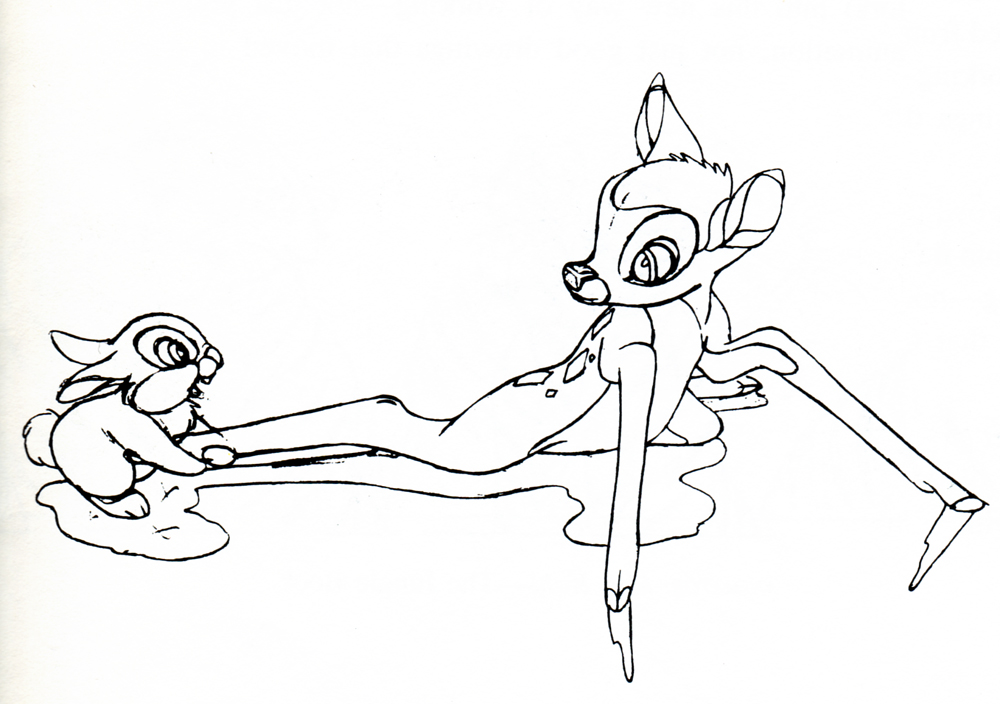 Look at one of Thomas’ greatest sequences, the squirrels in the tree. Starting with Seq.006 Sc.23 and almost completely through and ending with Seq.06 Sc.136 Frank Thomas did the animation. That’s a lot of footage. Yes, that represents four characters: Merlin and Wart as squirrels, as well as the older and younger female squirrels. He did the whole thing (and it’s one of the most beautifully animated sequences ever.)
Look at one of Thomas’ greatest sequences, the squirrels in the tree. Starting with Seq.006 Sc.23 and almost completely through and ending with Seq.06 Sc.136 Frank Thomas did the animation. That’s a lot of footage. Yes, that represents four characters: Merlin and Wart as squirrels, as well as the older and younger female squirrels. He did the whole thing (and it’s one of the most beautifully animated sequences ever.)
But when he was done with that and needed work, he didn’t stop on this film; he also did a bunch of scenes in the “Wizard’s Duel” between Merlin and Mad Madame Mim. Another big chunk.
Hans Perk has done a brilliant service for all animation enthusiasts out there. On his blog, A Film LA, he’s posted many of the animator drafts of feature films. You can find out who animated what scenes from any of the features.
However as Hans posts the batches of sequences, he gives little notes about what we’ll find when we open the drafts. In my view, Hans’ notes are also a treasure.
You can read remarks such as, “Masterful character animation by Milt Kahl and Frank Thomas, action by John Sibley and a scene by Cliff Nordberg.” That seems to tell us everything.
In Sleeping Beauty we can read, “This sequence shows, like no other, the division between Acting and Action specialized animators. Or at least it shows how animators are cast that way. We find six of the “Nine Old Men”, and such long-time Disney staples as Youngquist, Lusk and Nordberg, each of them deserving an article like the great one on Sibley by Pete Docter.”
Or in The Rescuers we read, “Probably the most screened sequence of this movie, the sequence where Penny is down in the cave was sequence-directed by frank and Ollie. They would plan their part of this sequence in rough layout thumbnails, then continue by posing all scenes roughly as can be seen in this previous posting.
“They relished telling the story that Woolie told them the animatic/Leica-reel/work-reel was JUST the right length, and when they posed out the sequence and showed it to Woolie, he said: “See? Just as I said: just the right length!” They kept to themselves that the sequence had grown to twice the length!”
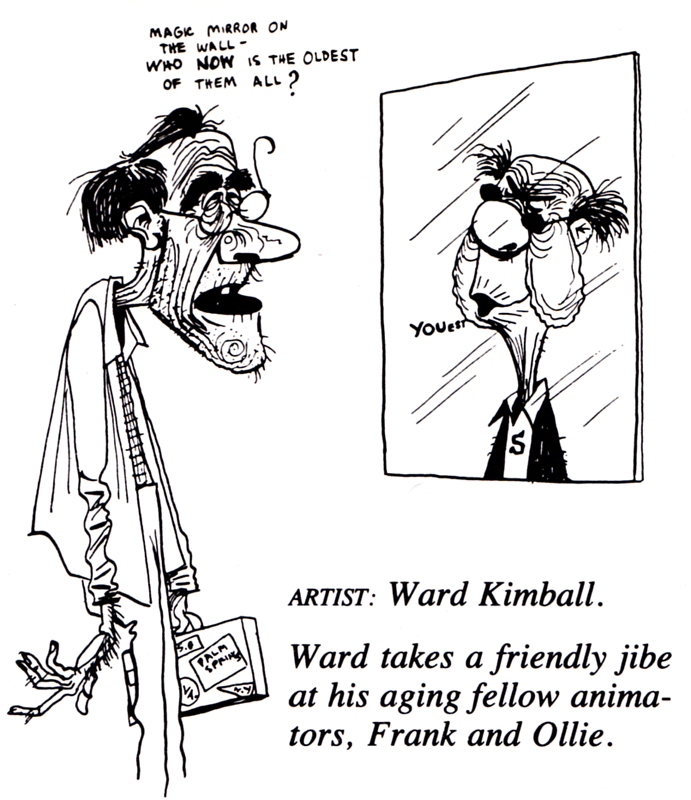 The work, right to the retiring of all of the “Nine Old Men,” would seem to me to prove that these guys, regardless of whether they added one or two other characters to the scenes, did, in fact, take charge of the one starring character.
The work, right to the retiring of all of the “Nine Old Men,” would seem to me to prove that these guys, regardless of whether they added one or two other characters to the scenes, did, in fact, take charge of the one starring character.
This continues past the retirement of all the oldsters: Glen Keane animated the “beast” in Beauty and the Beast. He animated Tarzan in Tarzan, Aladdin in Aladdin, Ariel in The Little Mermaid, and Pocahontas in Pocahontas. Andreas Deja animated Jafar, the Grand Vizier in Aladdin, Scar in The Lion King, Lilo in Lilo and Stitch, and Gaston in Beauty and the Beast. Mark Henn animated Belle in Beauty and the Beast (from the Florida studio), Jasmine in Aladdin, young Smiba in The Lion King, and Mulan and her father in Mulan.
Need I go on? What are Frank Thomas and Ollie Johnston talking about in their book? I’m confused.
I have a lot left to say about this book, much of it good, but next time I want to write about something else that confuses me with another somewhat contradictory statement in the book.
This has gotten a bit long, and I have to cut it here.
Commentary 27 Apr 2013 05:08 am
Just Inquiring
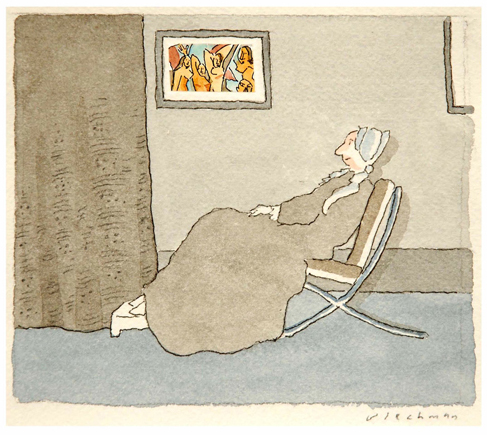 R.O. Blechman: The Inquiring Line is an exhibition that will take place at the Norman Rockwell Museum in Massachusetts and will run from May 11 through June 30, 2013.
R.O. Blechman: The Inquiring Line is an exhibition that will take place at the Norman Rockwell Museum in Massachusetts and will run from May 11 through June 30, 2013.
Joyce K. Schiller, PhD., the curator of the Rockwell Center for American Visual Studies writes: “Quavering and active with telling starts and stops, the marks of the artist’s hand are an essential aspect of (Blechman’s) art. His fine calligraphic strokes are a kind of nervous energy that gives the sense that his drawings could spring from the page.”
There will be an exhibition opening where you can meet the artist. On Saturday, May 11, from 6 to 8:30 p.m. There will be an Artist Commentary at 6:30 p.m. A festive reception will follow, including refreshments and a cash bar. Members free, guests $20. Please RSVP at (413) 931-2221 or rsvp@nrm.org.
Then on Saturday, June 15, 5:30 p.m., there will be “A Conversation with R.O. Blechman and Nicholas Blechman.” Father and son will discuss each other’s work. Bob is the illustrator, designer, film director and producer. Nicholas is the Art Director of the New York Times Book Review. The fee to attend the talk is $10 ($7 for Museum members).
Richie Havens
 – The recent passing of Richie Havens brought back a short memory I have from a number of years ago. I think it was 1984.
– The recent passing of Richie Havens brought back a short memory I have from a number of years ago. I think it was 1984.
I’d received a call out of the blue from Mr. Havens. Now, remember I grew up in the Sixties and was a part of the “Woodstock Generation.” I loved the music of the period and Havens was a big part of that – especially to a New Yorker. This call was a shock. I was asked to come meet with him about an animation project he was assembling. No questions asked, I got the date and time and showed up.
(Thanks to Annulla who photographed the picture to the left for her blog, Blather from Brooklyn)
It was in the very theatrical (albeit seedy at the time) area of 8th Avenue and 56th Street. I arrived to a very large open space. A very wide open, not-overly-furnished space. After a brief greeting, I was directed to the only other seat in the room – easily ten or more feet away in the somewhat dark room. Richie Havens, dressed in dashiki, was graced with some light that offered a halo around his head, and I sat out of the spotlight.
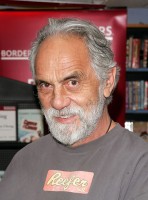 Apparently, Tommy Chong had decided to make an animated feature. He wanted to film a Kung fu style movie in live action and rotoscope this into an animated film. Richie Havens was acting as his representative and was interviewing me for the position of assisting Mr. Chong in any way possible to get this film made. They saw this as a complete breakthrough feature for animation. Nothing had been done like it before.
Apparently, Tommy Chong had decided to make an animated feature. He wanted to film a Kung fu style movie in live action and rotoscope this into an animated film. Richie Havens was acting as his representative and was interviewing me for the position of assisting Mr. Chong in any way possible to get this film made. They saw this as a complete breakthrough feature for animation. Nothing had been done like it before.
My alarms went off, and I decided I shouldn’t be too enthusiastic about the project. I didn’t want to turn them down on the spot, but I didn’t want to be involved. Rotoscoping and Kung fu movies were not my – - – interest.
It was a not very long meeting; there weren’t many specifics Mr. Havens could offer at the time. It was the earliest of stages. I left my samples, shook his hand again, and still remember the meeting some twenty years later. I think it was another of those films that never got made.
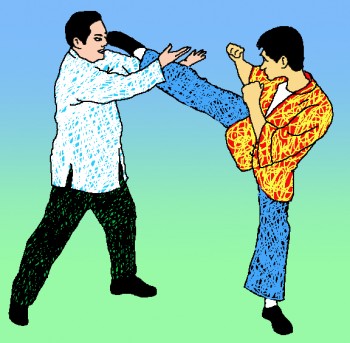
Perhaps the film would have looked like this.
Gun Violence
A few weeks back, I was chatting with a friend, Peggy Stern. She was the producer for John Canemaker on his Academy Award winning film, The Moon and the Son: An Imagined Conversation. Peggy talked about working with Philip Seymour Hoffman on a PSA. Soon enough, and just in time for the US Senate to vote it down, a video arrived via email to promote the idea of getting Congress to come up with some gun safety legislation. (Fat chance in this country!)
The video is the one Peggy had produced and not only has Philip Seymour Hoffman, but it also works with Julianne Moore narrating. It’s a nicely animated Flash piece, but the message is everything. (I wish I had been involved – it would have had more REAL animation instead of Animatic-like moving imagery. This is an issue I believe in and support, and I’d have done it gratis.)
The press line for the video reads:
- Mayors Against Illegal Guns, recruited dozens of the nation’s best cartoonists for the short film, which encourages citizens and lawmakers to take action to end gun violence in the U.S.
Take a look for yourself.
Lou Bunin at Auction
I received word that a portion of the Lou Bunin estate including some of their Alice in Wonderland Collection is currently up for sale at RR Auction. Go here.
You can see some of the items on view; these include puppets, drawings, watercolors and figurines. The prices are workable, and the items include many gems.
Oh, yeah. They’re also auctioning some Disney material. Most of it is later things (Winnie the Pooh cels, etc.) but there are quite a few other collector’s items available and worth a look.
Ginger
Tom Hachtman continues his series of redheaded women. This is the latest sketch of many he’s sent me.
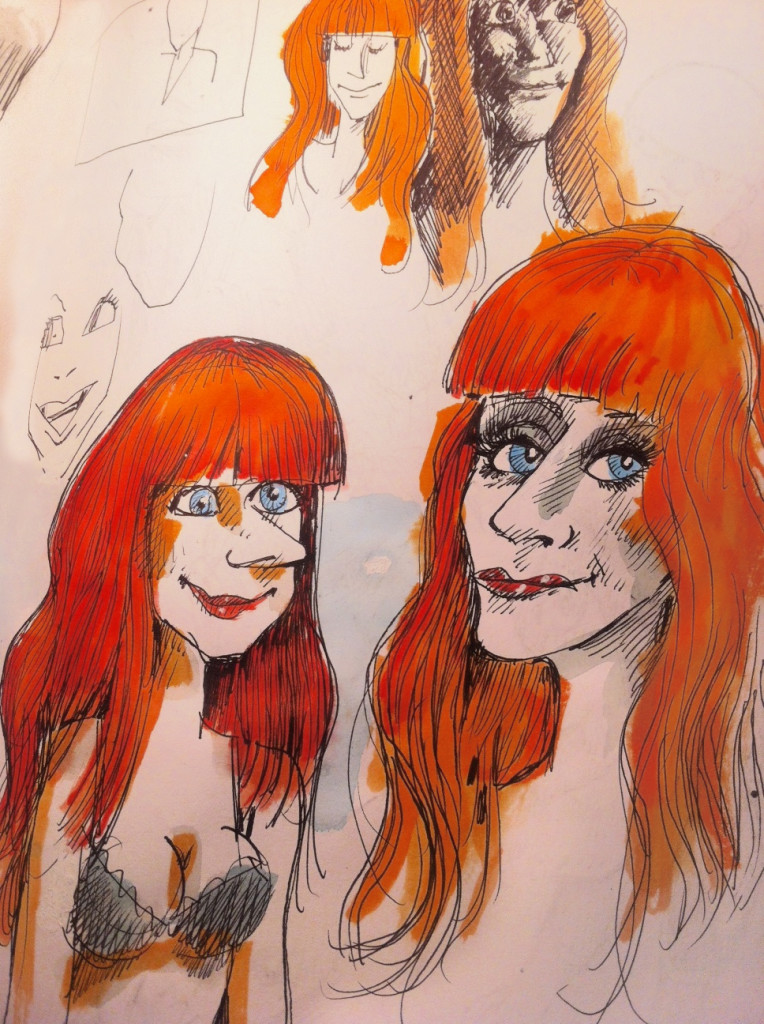
_____________________
Bluth Art
Mark Sonntag contacted me this last week to let me know that the Don Bluth collection of Animation Art was now located at the Savannah College of Art and Design and could be viewed on line. There, you can find art from Anastasia, Banjo the Woodpile Cat, Dragon’s Lair, Rock-A-Doodle, Secret of Nimh, Space Ace and Thumbelina. These include storyboards, preproduction art, background layouts and cel setups.
Here are some pieces I pulled from The Secret of Nimh, my favorite of the Bluth films (for all its many faults.)
Storyboard Sketches
A short sequence
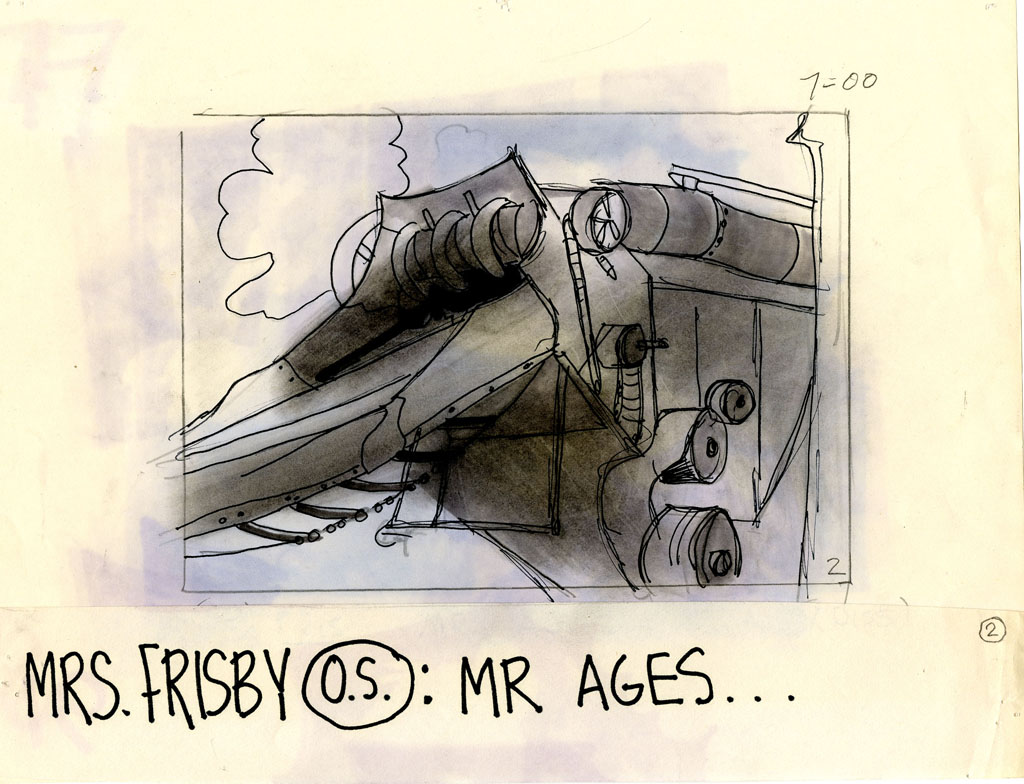 1
1 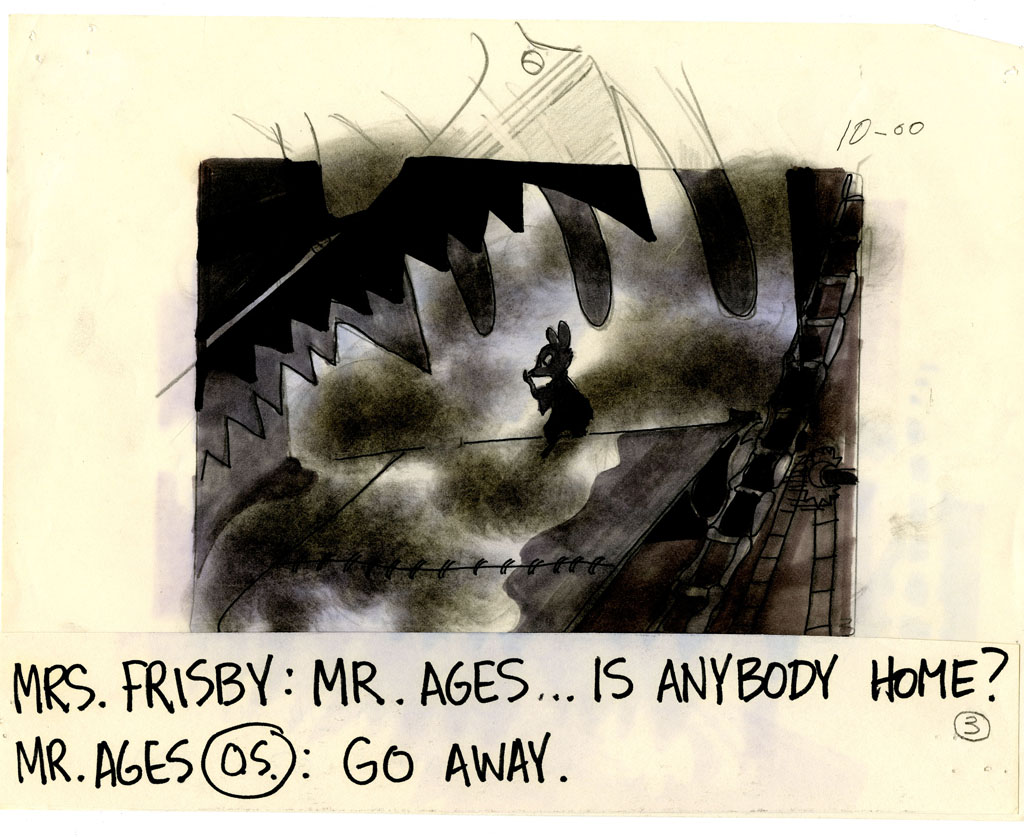 2
2
Random Bd Sketches
Many more are on display at the site. It’s the entire storyboard for The Secret of NIMH that can be viewed, one sequence at a time. Beautiful artwork, indeed.
Animation &Books &Comic Art &Disney &Guest writer &Illustration 11 Apr 2013 05:09 am
Peter Hale’s Peter Pan
About six weeks ago, I was contacted by Peter Hale in the UK about a “strip book” of Peter Pan that was published in England to tie into the original release of the movie. Peter sent me some beautiful scans of the artwork in the book, and I posted it (here.)
Mr. Hale promised a second book that was also published at the time.
It turns out he has done some extensive research into the subject of the books in conjunction with the Disney film. This week, I received a complete breakdown of all the “Pan” books that were published in the UK, and the scans for another book. I’ve decided that I really have to post what Peter has written; it’s that extensive. I’ll follow up with another post of the books scanned.
Many thanks to Peter Hale for sharing this fine work with the “Splog” and its readers.
The rest of this post is over to Peter Hale who writes:
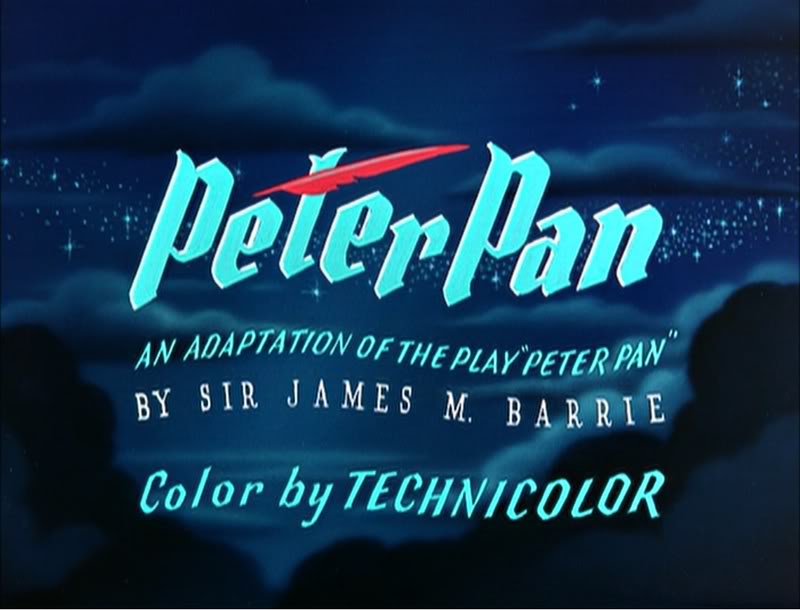 My (superficial) research into the Disney-illustrated books of Peter Pan published
My (superficial) research into the Disney-illustrated books of Peter Pan published
in the UK in 1953 has wandered off on several tangents.
Firstly a rough chronology of the development of the original book, and the Disney
film:
1902 – Barrie’s fantasy novel (for adults) The Little White Bird includes a sequence that
features Peter Pan, a 7-day-old baby who flies away from home so that he will never
grow up, and, after learning that he is not a bird, and therefore can’t fly, is
adopted by the faries in Kensington Gardens.
1904 – Barrie expands the idea of Peter Pan into a play, to great success.
1905 – The chapters from The Little White Bird that feature Peter Pan are republished for
children as Peter Pan in Kensington Gardens by his publishers, Hodder & Stoughton,
to cash in on the play’s popularity.
1911 – Because of the demand for Peter Pan products, Barrie publishes a novel based on the
play. He adds a coda wherein Peter promises to return each spring to take Wendy back
to Neverland to do the Spring Cleaning. But he starts to miss years, until he has
forgotten her altogether. Wendy grows up and has a daughter of her own. One day
Peter returns for her and is distressed to find that she is too old to fly away. But
he soon meets her daughter Jane and so takes her to Neverland, and when she grows
old, her daughter Margaret will take over – because he does need a mother.
1915 – Hodder & Stoughton publish an abridged version of Peter Pan for younger children,
written by May Byron with Barrie’s approval. They title it Peter Pan & Wendy.
1921 – A version of May Byron’s adaptation “retold for Little People” is published, with
illustrations by Mabel Lucie Attwell at Barrie’s request. Her drawings of babylike
characters presumably matched Barrie’s vision.
1929 – Barrie donates all the rights to ‘Peter Pan’ to the Great Ormond Street Hospital for
Children.
1935 – Walt Disney plans to follow Snow White with Peter Pan, but has difficulty securing
screen rights from Great Ormond St Hospital.
1939 – Having finally secured rights to make an animated film version, the Disney studios
schedule Peter Pan to follow Bambi and Pinocchio.
1941 – The entry of the US into WWII forces Disney to postpone productions.
1947 – The Disney Studios put Peter Pan back into production.
1953 – February 5th: Walt Disney’s Peter Pan premieres at the Roxy Theater, New York.
1953 – April 16th: Walt Disney’s Peter Pan has its UK premiere at the Leicester Square
Theatre, London.
1953 – May: Walt Disney’s Peter Pan is shown at the 6th Cannes Festival.
1953 – July 27th: Walt Disney’s Peter Pan goes on general release in the UK.]
Through the 40s her characters became ever more chubby, stunted and stylised, but in 1915 she was still starting out as an illustrator.
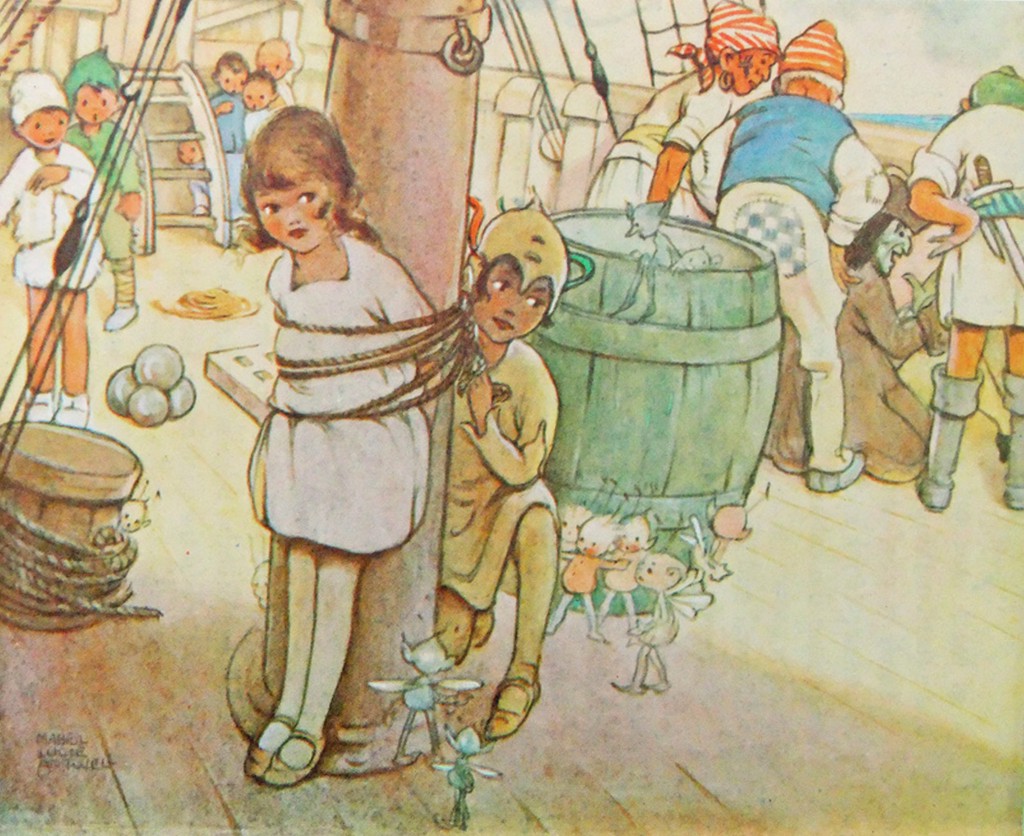
Here is her version of Peter freeing Wendy from the mast.
The illustrations she did then became almost as much part of the May Byron version of “Peter Pan and Wendy” as Tenniel’s were part of “Alice”, and it was still being published in 1980. A reprint of the 1921 edition was published in 2011.
Which brings us to the versions of Peter Pan published in the UK in 1953.
Jacqueline Rose, in her book “The Case of Peter Pan”, lists the following six books published in the UK that year:
- Barrie, J. M. Peter Pan in Kensington Gardens, illustrated by Arthur Rackham, ‘Peter Pan Books’ (from 9 years) (London: Hodder and Stoughton, I953)
- Bedford, Annie N. Disney’s Peter Pan and Wendy, ‘Peter Pan Books’ (London: Hodder and Stoughton, I953)
- Byron, May. Peter Pan in Kensington Gardens, illustrated by Arthur Rackham, ‘Peter Pan Books’ (for 6 to 8 year olds) (London: Hodder and Stoughton, I953)
- Byron, May. The Walt Disney Illustrated Peter Pan and Wendy, ‘Peter Pan Books’ (for 8 to 9 year olds) (Leicester: Brockhampton Press, I953)
- Pearl, Irene. Walt Disney’s Peter Pan, retold from the original story by J. M. Barrie, ‘Peter Pan Books’ (for 3 to 6 year olds) (Leicester: Brockhampton Press, I953)
- Winn, Alison. Walt Disney’s Peter Pan, retold from the original story by J. M. Barrie ‘Peter Pan Books’ (for 6 to 8 year olds) (Leicester: Brockhampton Press, I953)
as opposed to just one in 1952:
- Byron, May. Peter Pan, retold for the nursery, illustrated by Mabel Lucie Attwell, ‘Peter Pan Books’ for 3 to 6 year olds) (Leicester: Brockhampton Press, I952)
Two of these are versions of the Peter Pan in Kensington Gardens ‘origin’ story, which Disney had decided not to include in the film.
The remaining 4 are all “Illustrated by Walt Disney”. The Irene Pearl version is the strip book already posted, and scans of the May Byron book and the Alison Winn “Little Book” will follow. These all follow the Barrie novel rather than the Disney film, although with different simplifications and omissions.
The Annie N. Bedford book is one I have not been able to trace – she is the American author who wrote the Golden Books version of the Disney film, so this could be a UK publication of that book. It is given as published by Hodder & Stoughton, Barrie’s original publisher. The back cover of the Brockhampton ‘Little Book’ lists a different Hodder & Stoughton book.
“J. M. Barrie’s original Peter Pan and Wendy for older Boys and Girls, with illustrations by Walt Disney”. I have not been able to trace a copy of either book. These two books represent the two ends of the spectrum:
Barrie’s original text and the story of the film.
Finally there is the complication of Dean & Son’s Walt Disney’s Peter Pan, from the motion picture, a book of the film. This has no publication date. The illustrations are given as copyright Walt Disney 1953, but this is not a guide to the publication date, as Disney did not own the publishing rights and so the illustrations were always copyrighted to 1953, the year of the film’s release. It is probable that the Dean book was published later than 1953.
It is published ‘by arrangement with Hodder & Stoughton’, which either means it may be a reprint of the Bedford book, or just an acknowledgement that Hodder held the publication rights to Peter Pan.
In contrast I can only find one UK ‘Disney’s Alice in Wonderland‘ book that might have been published in 1951, and certainly no Carroll text with Disney illustrations.
So why so many Peter Pans? The UK’s wartime paper rationing ended in 1950 so that would not be an issue.
Was it because Disney did not have the publishing rights, so this collaboration was necessary to promote the film?
Was it just, as I’d thought previously, that the British might object to tampering with the story? Or was Disney just trying to overcome the sort of criticism that his Alice had suffered in the UK (that it was too Americanised and not sufficiently true to the book) by linking his film to the original text?
Comparing the 3 Brockhampton books the illustrations are all different, and by different hands it would appear, but all show fidelity to the Disney style. I am assuming that these illustrations were done by British illustrators specially for the books, as where the illustrations differ from the film the artists seem to have consulted the particular text they are working with for details.
Hence the May Byron text describes the adding of a shoe as a knocker, and John’s hat as a chimney, and the illustration shows the hat, although it also shows Wendy watching the building from outside, which is quite wrong!
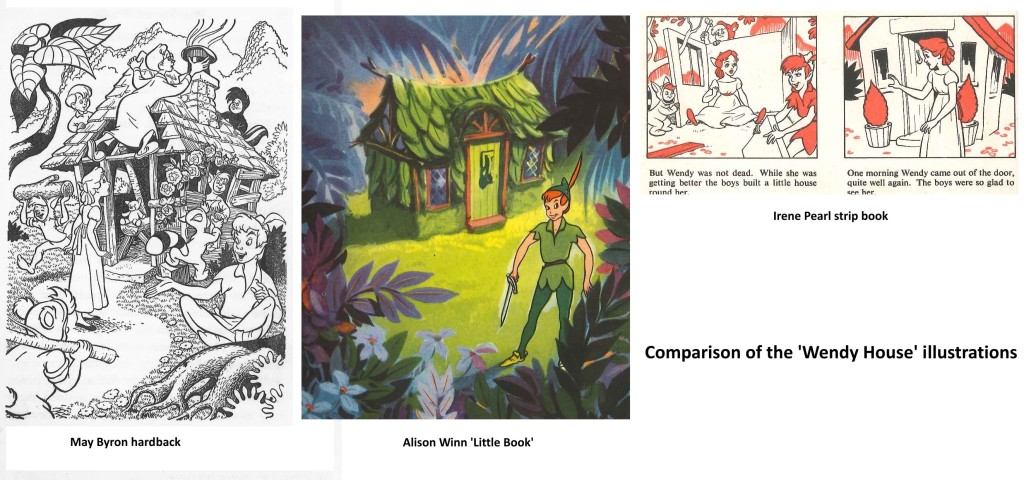
The marooning of Tiger Lily is done in the book by two pirates, with Hook turning up
later.
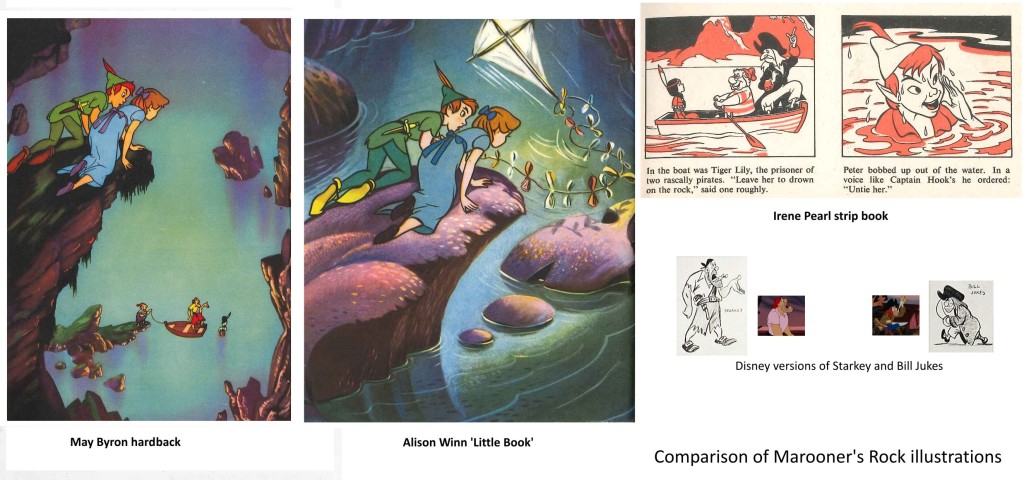
In the May Byron book they are named as Smee and Starkey, and the
illustration has Hook replaced by a likeness of the Disney Starkey (but with a
yellow shirt instead of pink). The strip book doesn’t name the pirates and Hook is
here replaced by Bill Jukes. The Alison Winn version omits the marooning of Tiger Lily entirely and just has Hook turn up to attack Peter.
All three books have Wendy exhausted and Peter injured after the encounter – both
stranded on the rock unable to fly back. John’s kite collects Wendy, while Peter is
rescued by the Never bird, whose floating nest serves as a boat. The Winn ‘Little
Book’ uses a version of the shot of Peter and Wendy watching Hook and Smee from on
high, but without the pirates, truncated to appear a low rock, and with a kite added
in.
This brought me to wonder how much Disney reference they were given, and what it
consisted of. Many of the scenes are close to shots from the film. But a look at the
Dean book, which seems to be taken directly from colour stills, shows that these are
not actually shots from the movie.
Anyone who has ever tried to put together presentation scenes from the cels of an
animated film knows that there are always problems – the best pose is poorly traced,
or one character is in an ungainly inbetween position – whatever, that perfect key
image from the storyboard just isn’t there in the actual film, where, deliberately,
nothing hits a strong extreme at the same time.
Hence it appears that the lobby card stills or coloured transparencies that Disney
circulated in their press packs etc. had been specially recreated – a lead animator
had redrawn the characters from various key frames as they ought to have looked, and
these drawings had been traced and painted on cel with extra care, and combined with
a new version of the background to be photographed by a stills camera. (I presume
the composites then went up on someone’s wall!) The same thing, of course, as the
re-posing of key scenes that is typically done by a stills photographer on the set
of a live action film after it has been shot.
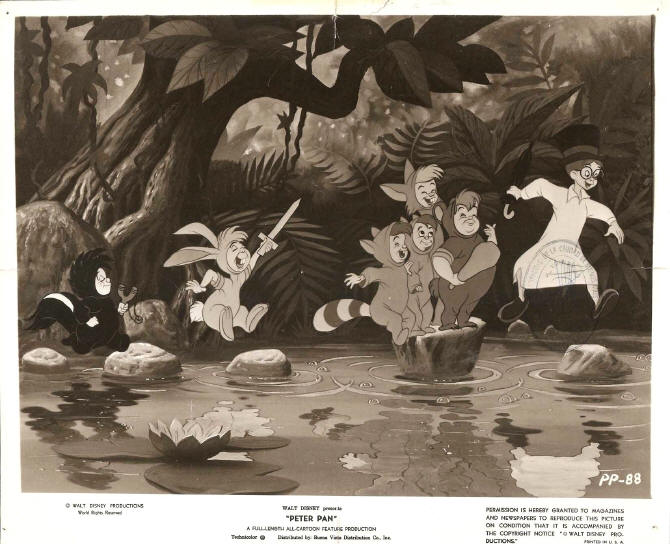
The illustrators appear to have had coloured stills and model sheets to work from.
Does anyone know how much reference was supplied? Walt Disney Studios had an office
in London specifically to deal with promotion, distribution, licensing artwork etc.
Did they do artwork for any of the books – or just supply references?
Lastly, the curator of the Great Ormond St. Children’s Hospital Archives has kindly
sent me these scans relating to the London Premiere of Peter Pan on 16th April 1953
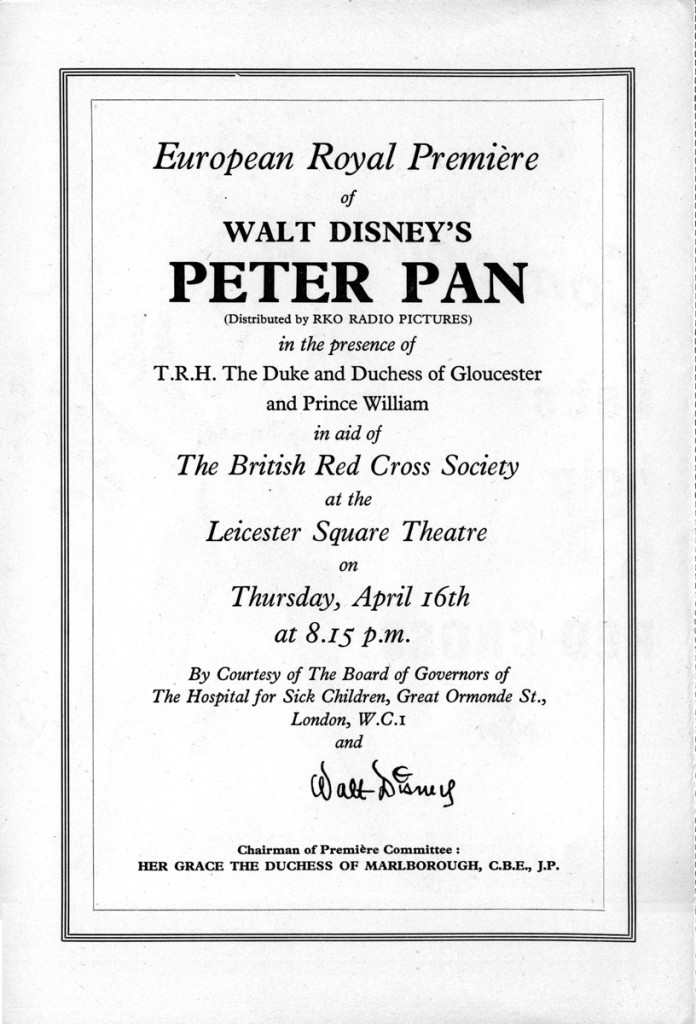
It’s worth taking note that Hans Perk has recently posted the animators’ drafts from the Disney film, Peter Pan. Go here to read and/or collect them.
Animation Artifacts &Comic Art &Disney 05 Mar 2013 03:38 am
a Peter Pan Strip Book
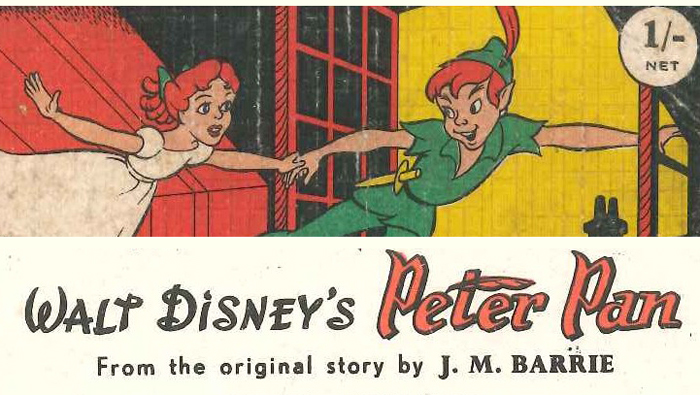
I received a wonderful email from Peter Hale. He wanted to send me this beautiful booklet adapting Peter Pan for children. What follows is Peter’s letter accompanying the book.
- Dear Michael
Following on from Hans Perk‘s recent drafts of Peter Pan, I thought you might be interested in this curious book, published in Britain in 1953.
Curious, not so much in it’s format (15mm x 7mm, landscape, 2 staples on left
covered by cloth binding, and consisting of two panels per page with text beneath – Brockhampton Press produced a series of these, primarily featuring stories about Enid Blyton’s “Mary Mouse”, then “Jimmy and his Little Old Engine”, and subsequently some other one-offs) but in the fact that although drawn in the style of the completed Disney cartoon the story sticks closer to J M Barrie’s novelisation of the play (including building the Wendy House, Peter’s rescue by the Never Bird, and Tinkerbell’s drinking the poisoned medicine – see scans).
The story adaptation is by Irene Pearl, a children’s writer whose other works
include a series of ‘Nursery’ classics – retellings of such traditional stories as Alice in Wonderland, The Snow Queen, Sleeping Beauty, etc. – in the late 30s, for publishers Hodder & Stoughton, and later, in the 50s and 60s, some original stories of her own.
I had wondered if the “Nursery Classics” series that Irene Pearl had worked on in 1938 might have included “Peter Pan”, and if so whether the text might have come from it. A Google search revealed there had been a “The Nursery Peter Pan and Wendy”, but that it had been ‘retold’ not by Irene Pearl but by May Byron, who hadalso done other books in the series. The Publisher was given as Brockhampton, rather than Hodder & Stoughton, but I think that might just be a cataloguing error.
The book was a one-off intended to capitalise on the release of Peter Pan (there are no other Disney books in the series as far as I know) so the adherence to the Barrie version, with its need for drawings not derived from the film, is curious – perhaps it was thought that the British would not accept Disney’s deviations from Barrie in book form.
I do not know who the artist was. This version does not appear to have been printed in any other form.
I originally had a copy of this book as a child, but although I kept it for a long time it final got lost. I recently found another copy and have had the opportunity to regain my childhood!
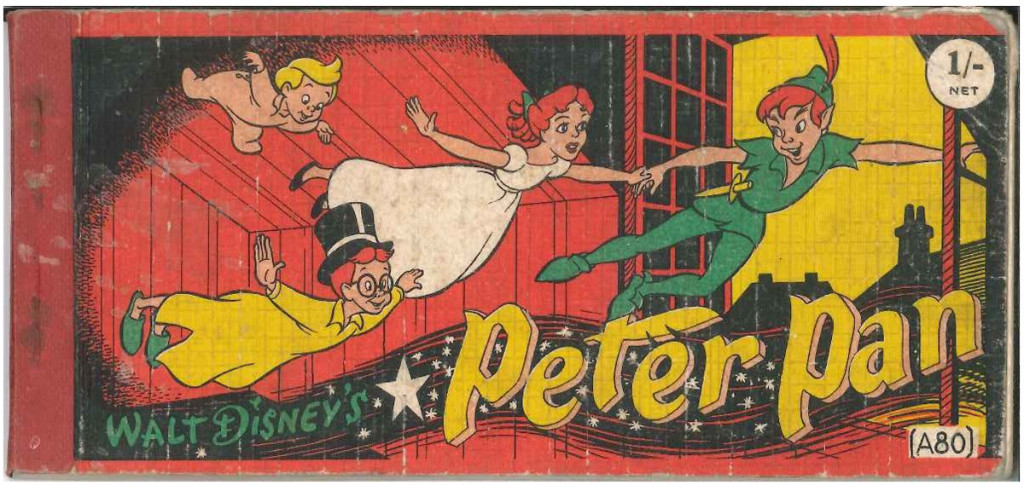 1
1
Many thanks to Peter Hale who took great care in scanning and preparing the material to present it all in its best possible light.
Commentary &SpornFilms 24 Feb 2013 04:39 am
Jabberwocky
- To me, Lewis Carroll‘s nonsense poem, Jabberwocky, is one of the most brilliant pieces ever written. It’s always been important to me, and I’ve collected many versions of it in illustrated versions.
I’d like to post here a few of the images from my short adaptation of the Lewis Carroll poem, Jabberwocky. In doing the film, I tried to mimic a style I’d used in my oil paintings and felt it was a bit successful. I don’t think the filmed version is all it could be – it was rushed to complete a package which included the 19 min. film, The Hunting of the Snark, as well as an animated documentary done about Lewis Carroll’s nonsense poems. Of course, the video package wouldn’t have made sense without including Jabberwocky.
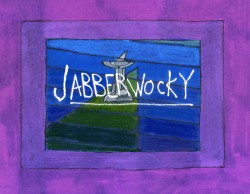
(click any image to enlarge.)
But I’ve scanned these images from the actual artwork and realize how well they’ve held up. I’d like to redo the film digitally someday and see where I can go with it.
Here are some of the images:
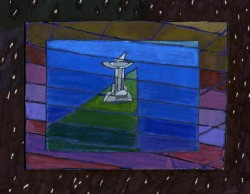
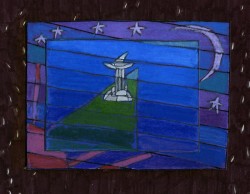
‘Twas brillig and the slithy toves,
Did gyre and gimble in the wabe;
All mimsy were the borogoves,
And the mome raths outgrabe.
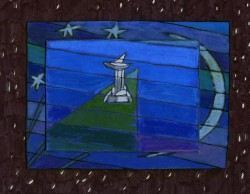
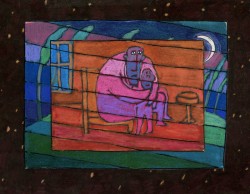
“Beware the Jabberwock, my son!
The jaws that bite, the claws that catch!â€
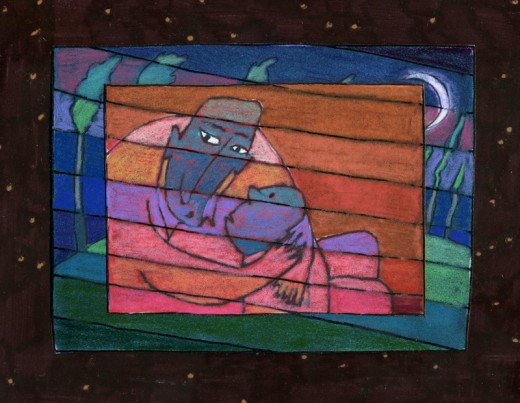
“Beware the Jubjub bird, and shun
The frumious Bandersnatch!â€
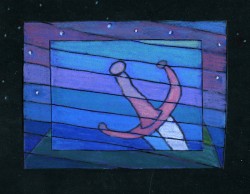
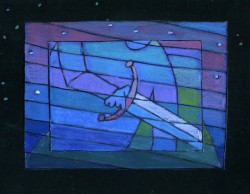
He took his vorpal sword in hand;
Long time the manxome foe he sought -
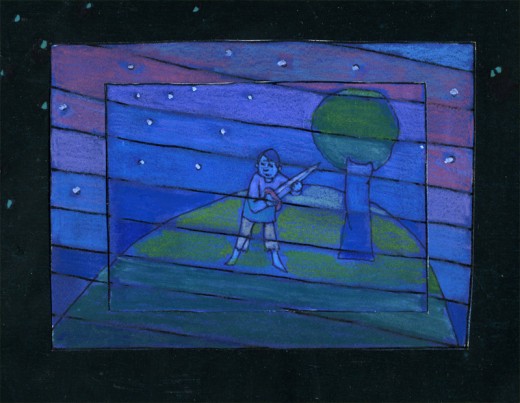
So rested he by the Tumtum tree
And stood awhile in thought.
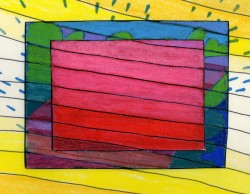
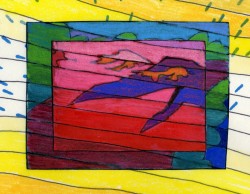
And as in uffish thought he stood,
The Jabberwock, with eyes of flame,
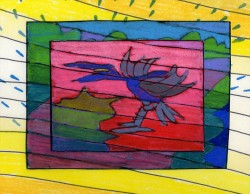
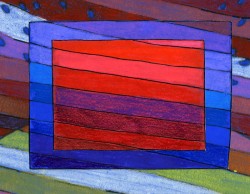
Came whiffling through the tulgey wood,
And burbled as it came!
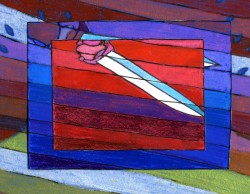
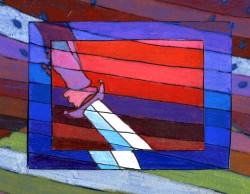
One, two! One, two! And through and through
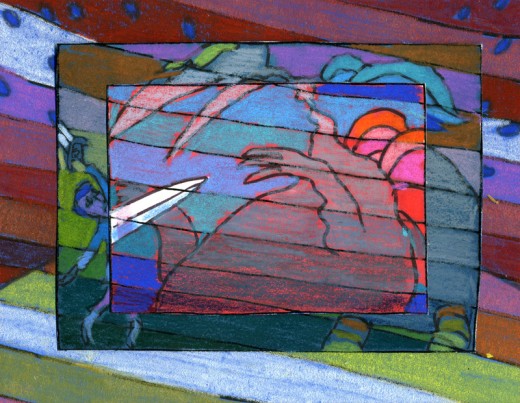
The vorpal blade went snicker-snack!
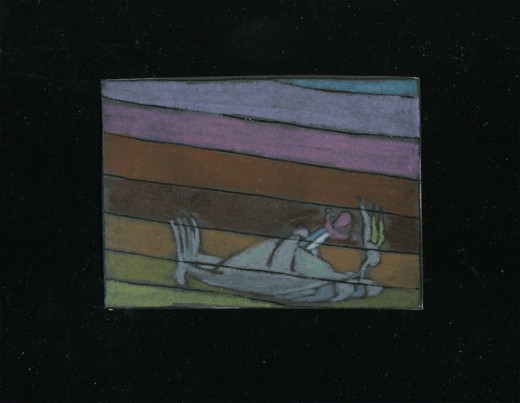
He left it dead, and with its head
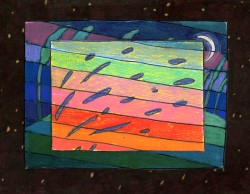
“And hast thou slain the Jabberwock?
Come to my arms, my beamish boy!
O frabjous day! Callooh! Callay!â€
He chortled in his joy.
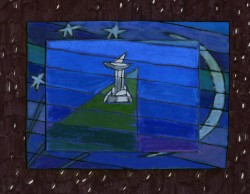
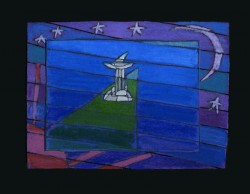
‘Twas brillig and the slithy toves
Did gyre and gimble in the wabe;
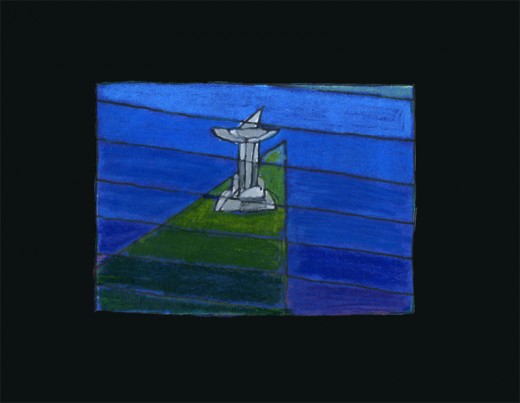
All mimsy were the borogoves,
And the mome raths outgrabe.
______________________
In other film versions, you have the one live action feature by Terry Gilliam; it’s a good film with a clunky monster in the end. In animation, professionally, I know of only two versions completed. One was by Jan Svankmajer done in 1974. I did a version of it in 1989. Mine, of course, sticks closer to the poem even though it is pretty “arty”.
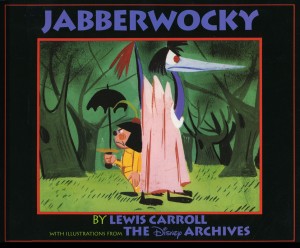 Apparently, there was also a version Disney was preparing as part of Alice In Wonderland. A book was published, credited to the “Disney Archives,” with illustrations from the preparatory drawings of this sequence. It’s obvious that the final versions of these drawings were done by one person, but there’s no record in the book of who did the finals.
Apparently, there was also a version Disney was preparing as part of Alice In Wonderland. A book was published, credited to the “Disney Archives,” with illustrations from the preparatory drawings of this sequence. It’s obvious that the final versions of these drawings were done by one person, but there’s no record in the book of who did the finals.
I’m not in love with the images in the book, and I know I would have hated the animated version (especially if it looked like this.) They’re trying too hard to make sense of the poem. I find the images too cute, though, it’s amazing how current they look.
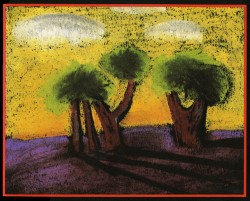
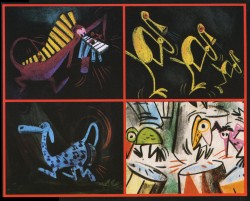
‘Twas brillig and the slithy toves
Did gyre and gimble in the wabe;
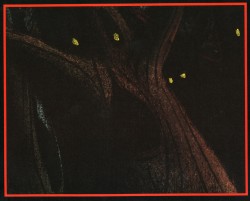
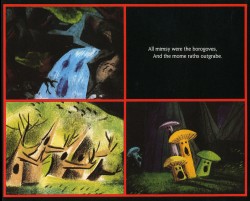
All mimsy were the borogoves,
And the mome raths outgrabe.
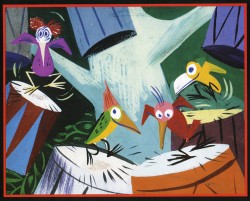
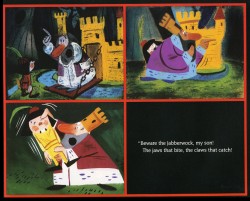
“Beware the Jabberwock, my son!
The jaws that bite, the claws that catch!”
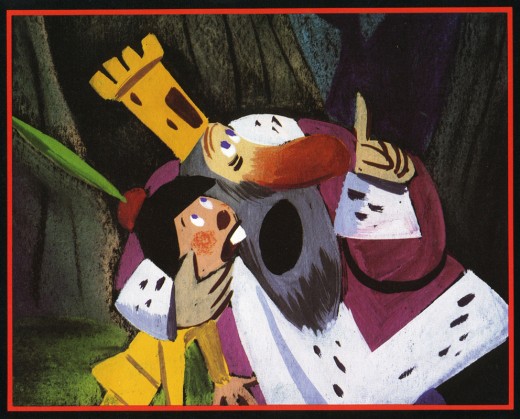
“Beware the Jubjub bird, and shun
The frumious Bandersnatch!”
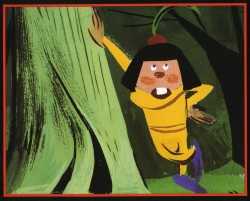
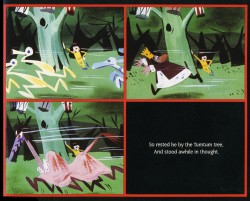
He took his vorpal sword in hand;
Long time the manxome foe he sought -
So rested he by the Tumtum tree
And stood awhile in thought.
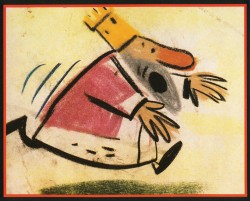
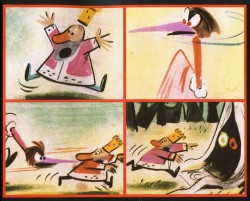
And as in uffish thought he stood,
The Jabberwock, with eyes of flame,
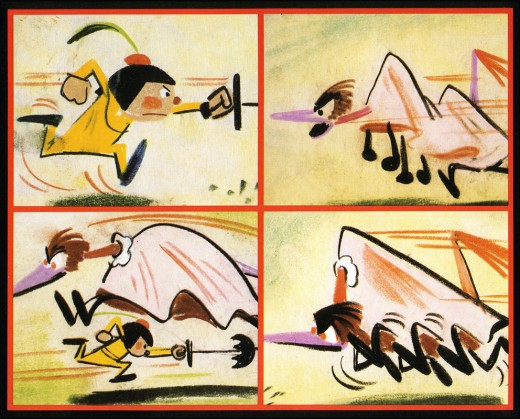
Came whiffling through the tulgey wood,
And burbled as it came!
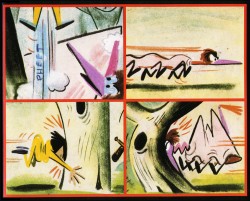
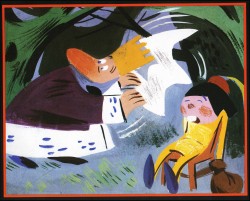
One, two! One, two! And through and through
The vorpal blade went snicker-snack!
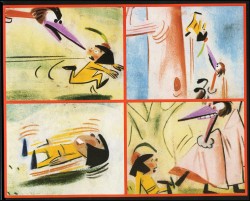
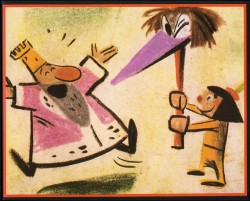
He left it dead, and with its head
He went galumphing back.
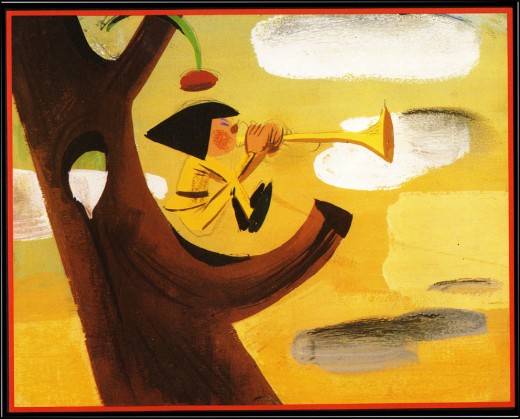
“And hast thou slain the Jabberwock?
Come to my arms, my beamish boy!
O frabjous day! Callooh! Callay!”
He chortled in his joy.
(Boy, do I like my version better! – MS)
Jim Hill writes a bit about this book on his site in a letter response. here. (Scroll down to middle of page.)
For amusement, you might check out this site for translations of this poem into 58 other languages, 23 parodies of the poem, and 10 explanations trying to define what Carroll meant by it.
Books &Commentary &Disney 19 Feb 2013 05:17 am
Jim Korkis’ Song of the South
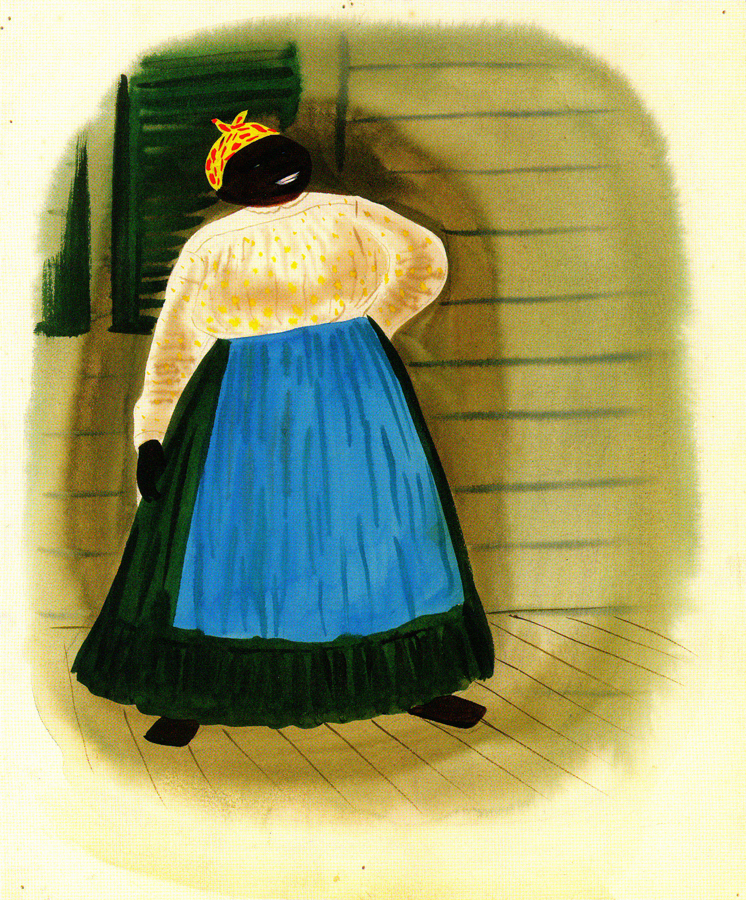 As the War came to an end, Walt Disney realized that he needed to find a way to raise money for his movies or, at the least, make films more profitably. One idea he chose to employwas to make more live action film.
As the War came to an end, Walt Disney realized that he needed to find a way to raise money for his movies or, at the least, make films more profitably. One idea he chose to employwas to make more live action film.
He’d had some modest success with The Three Caballeros and Saludos Amigos by combining live action and animation.
For years he’d thought of doing a combination film with Alice In Wonderland placing a live action Alice in an animated world, not unlike the early silent films Alice in Cartoonland.
Disney also thought of going to the stories of Joel Chandler Harris. By making the story of the humans in live action and the stories of Br’er Rabbit, Br’er Fox and Br’er Bear in animation, as told by Uncle Remus who would star in the significant part of the story told in live action. Thus he could easily work as the voice over narrator for the animation.
The film went into production in 1945 and pulled Disney down a harsh and difficult path.
Now, some 70 years later, studio head, Robert Iger, has vowed numerous times to keep Song of the South (the film’s title) on a shelf in the Disney vault, which is where it remains.
Disney historian, Jim Korkis, has written a series of excellent essays which act as chapter in a new book about the making and unmaking of this film. In his book, Who’s Afraid of Song of the South, a great weight of information completely informs us about this movie while being written in a positive and gentle approach.
Were the film as bad as Iger and other Disney executives want us to believe, here would still be a good reason for this book’s existence. Perhaps, though, it might have been a larger and more colorful tome.
The live action, representing about 60% of the film is not well conceived. It is terribly out of date and not well directed. Most importantly, the film is not well written. It’s somewhat confusing as to when the story takes place (pre- or post-Civil War?) What are the father’s resources, who owns the plantation where they’re living and where is the story trying to take us.
The acting by James Baskett as Uncle Remus is superb and wholly deserving of the Special Oscar he received. Child actor, Bobby Driscoll, is also fine, but many of the other performances are bland and not very noteworthy. The film is horribly dated. The Disney people sought the finest cinematographer they could get, and they did find him in Gregg Toland. He was the brilliant photographer of Citizen Kane and How Green Was My Valley. However, Song of the South was his first color film, and that was an enormous leap to make at the time. Toland had good reason to want to do the movie, but the film feels like Gone With the Wind – lite and helps to make it feel dated.
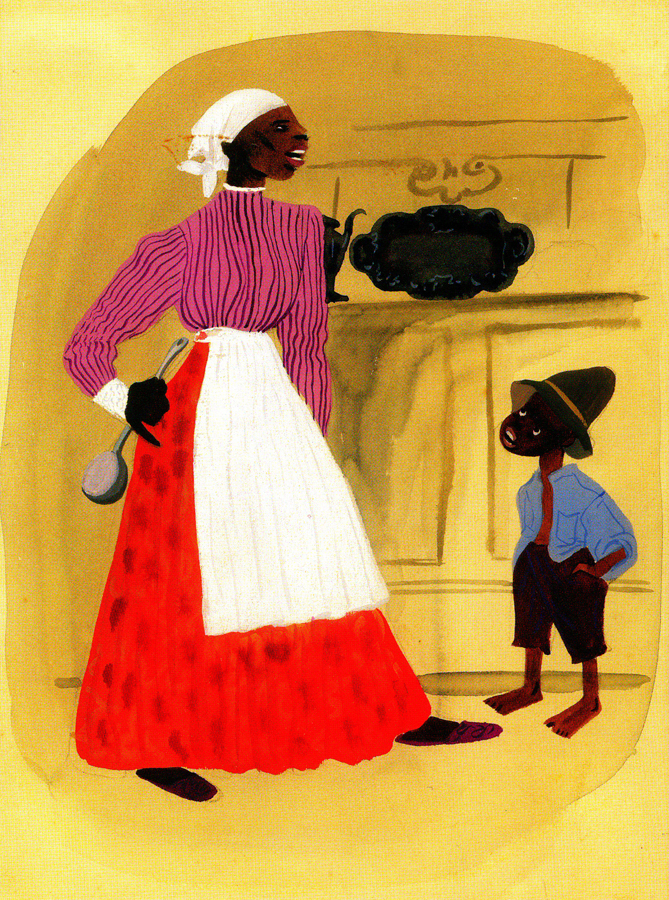 However bad the live action was, the animation was the polar opposite. The stories are told very economically with lots of excitement and life in the storytelling. All those who worked on it spoke openly about how much fun they had in doing it. Those results showed up on the screen. The characters are delightful and beautifully developed. This was certainly the spark everyone in the animation department needed as they came off years of toiling away at dry, training films for the military.
However bad the live action was, the animation was the polar opposite. The stories are told very economically with lots of excitement and life in the storytelling. All those who worked on it spoke openly about how much fun they had in doing it. Those results showed up on the screen. The characters are delightful and beautifully developed. This was certainly the spark everyone in the animation department needed as they came off years of toiling away at dry, training films for the military.
While the live action dates the material and plops it in a marginally racist context, the opposite is true of the combustible animation.
The Disney studio has hidden the DVD of this movie from the General Public. There are illegal copies of film circulating the Internet, but the quality could never be as good as a studio sanctioned copy of the movie. It’s truly unfortunate, for the sake of that great animation, that the film is inaccessible.
Korkis’ book is a very quick read and he seems to cover the story well. One would have liked a richer book with glossy images, especially of the beautifully designed Mary Blair animation.One wishes that there were lots of stills of the great Bill Peet storyboard or those great animation drawings by the Nine Masters who were truly in their prime. But we have what we have, and we’re thankful for that.
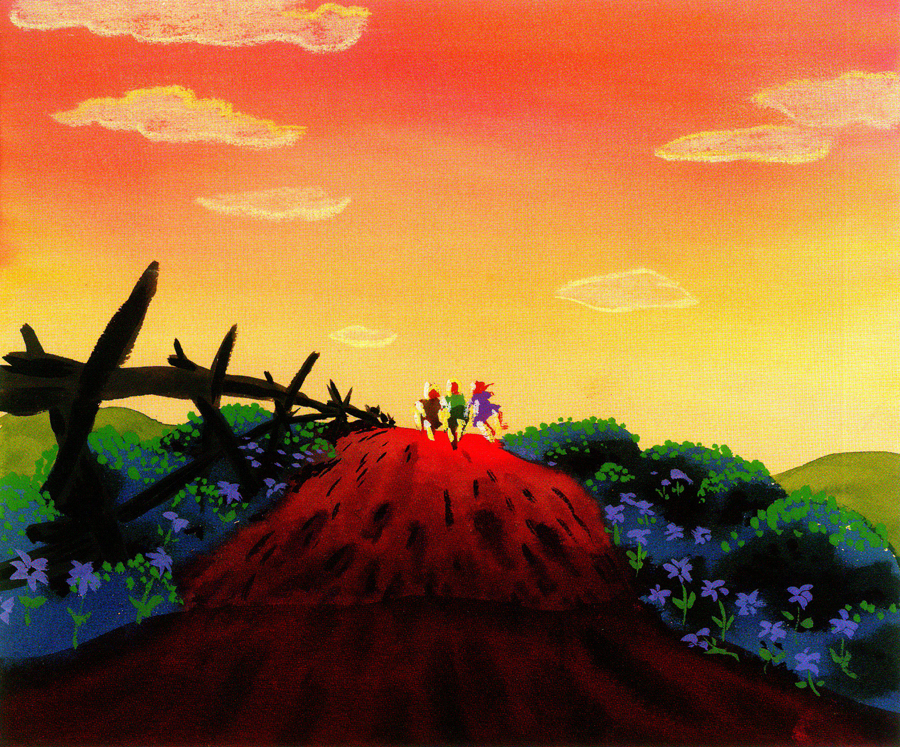
If you have any interest in this film you will have to get your hands on a copy. The last half of the book if filled with some essays about other, lesser films. Some of th essays are truly excellent and feel hidden in the back of this book. One, for example, about a commercial producing studio Walt had on the lot. Learning that Walt’s daughter, Sharon, worked as an assistant to his sister-in-law’s sister, who ran the company, would seem to be a key piece of information. But when you start to learn who Walt used to do the animation work (Tom Oreb designing for Charles Nichols directing with Phil Duncan, Amby Paliwoda, Volus Jones and Bill Justice all were among those animating. There’s even the story of Bill Peet being punished by Walt and made to work on a Peter Pan peanut butter campaign.) This is an excellent piece. As is the story behind The Sweatbox, the feature documentary that was hidden by the Disney studio about the adventures in the making of the Emperor’s New Groove. Lots to read here.
All in all, this book is an excellent bargain.
All of these illustrations were done by Mary Blair for the film.
They’re not part of Jim Korkis’ book.On Thursday I’ll repost Bill Peet’s storyboard for The Tar baby.
Disney &Frame Grabs 31 Jan 2013 06:35 am
Operation Wonderland Redux
- On the DVD of Alice in Wonderland, there’s an extra little short that supposedly gives you a tour of the studio and a lesson in how animated films are made. (Do you think we’ll ever see one about Dreamworks or Pixar? I’d like to get a video tour of either studio.)
Since I’ve been focussing on Alice’s Milt Kahl scenes, I thought it’d be interesting, as an accompaniment, to post some frame grabs from this theatrical short that was done to promote Alice.
 1
1(Click any image to enlarge.)
 2
2
Of course, the film has to start with Walt
riding a toy train around the studio.
 3
3
Two storyboard guys sitting in the middle of the studio.
 4
4
Storyboard: the walrus grabs a clam.
 5
5
Ward Kimball in a funny jacket.
 6-7
6-7
The actor posing as the Walrus for the camera.
 9-10
9-10
The Walrus & Carpenter sequence.
 12
12
Walt and Winston Hibler. Hibler eventually narrated
most of the Disneyland shows and True-Life adventures.
 14
14
Flowers from storyboard to final film.
 15
15
Walt gives a demo of the animation camera and
seems to be wrinkling the cels as he does this.
 16
16
Walt operating an animation camera. Ludicrous.
 17
17
Walt and Kathryn Beaumont (who’s
supposed to be doing schoolwork.)
 18
18
Kathryn Beaumont and Ed Wynn.
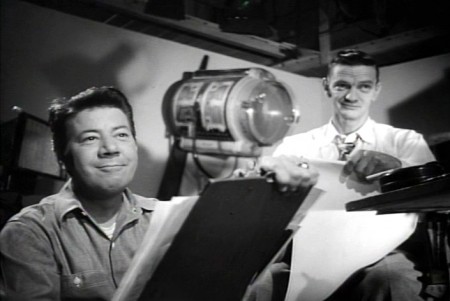 20
20
John Lounsbery on the right. The other animator looks to be
Fred Moore. Older and heavier than we’ve seen him in the past.
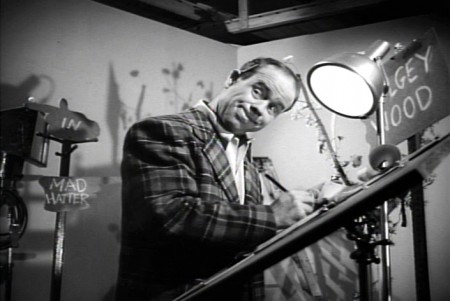 22
22
More of wacky Ward Kimball pretending to draw.
 23
23
Kathryn Beaumont and Jerry Colonna.
 25
25
Jerry Colonna leads us into pencil test of the scene.
 27
27
This scene was animated by Ward kimball & Cliff Nordberg.
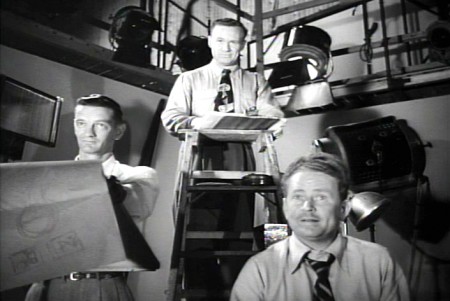 46
46
John Lounsbery is on the left.
I’m not sure who the other two are.
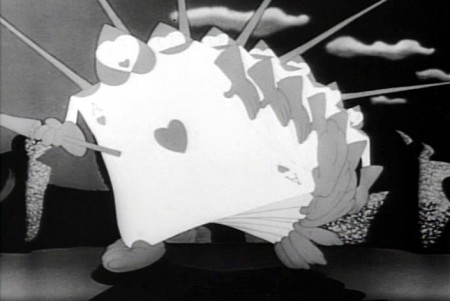 47
47
The cards in action in the film.
 49
49
One of the highlights of the film is this dancer doing
march steps for the cards – to be studied.
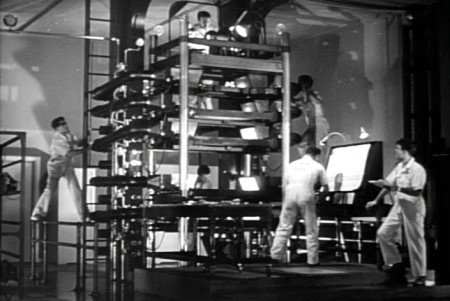 50
50
The multiplane camera in operation.
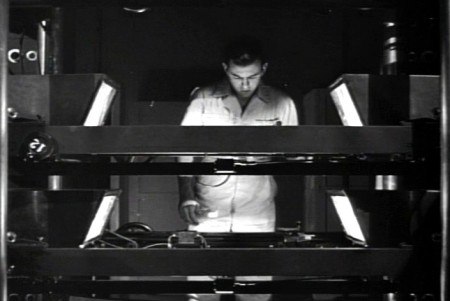 51
51
The cameraman at the top always looks a bit devilish.
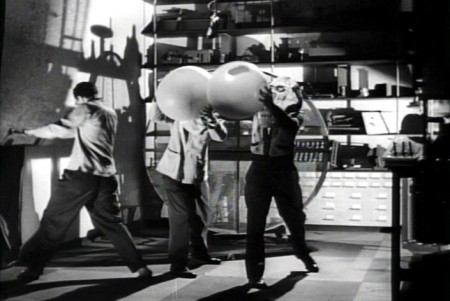 52
52
No “how animation is made” film would be complete
without the sound effects guys making a racket.
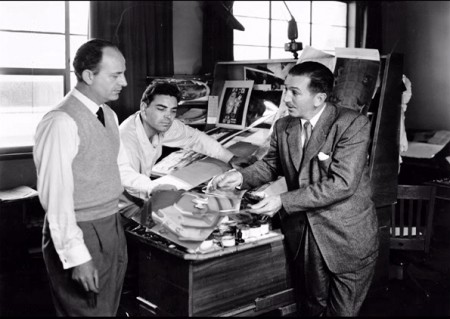 54
54
Walt going over some artwork with
John Hench (L) and Claude Coats (center)
Thanks to Hans Bacher and Gunnar Andreassen for identifying them.
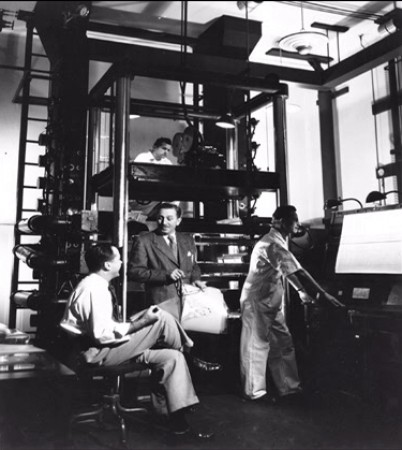 55
55
Before riding his toy train into the sunset, Walt sits
in front of his real toy, the multiplane camera.
If anyone can identify any of those I couldn’t, or if you think I’ve mistakenly identified anyone, please leave a comment.
There’s an art gallery of images, many of which are by Mary Blair (and I’ve already posted her pictures a while back.) I’ll finish this post with some more of the images on the dvd.
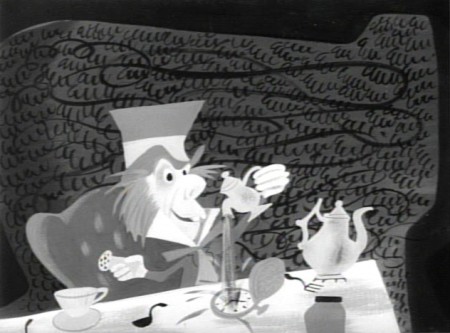 1
1Mary Blair in B&W.
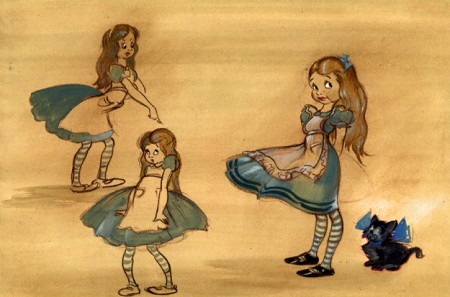 4
4
Thiis looks like it comes from HOPPITY GOES TO TOWN.
To see more Mary Blair designs for Alice go here.
Commentary &Disney 22 Jan 2013 08:28 am
Rambling on some Disney Features
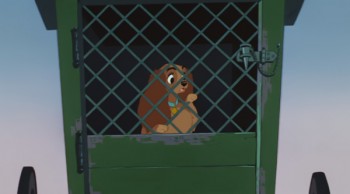 - A stash of Disney animated features were on television this Sunday. Hercules, Lady and the Tramp, Alice in Wonderland, Aladdin, Cinderella, and The Lion King all followed each other immediately, one on top of the other. Actually some of them even overlapped each other. The credits for Hercules (miniscule and too tiny to read) played on the left half of the screen while the opening credits for Lady and the Tramp played on the right half of the screen. They were going to milk every ounce of Disney Family viewing they could for the money.
- A stash of Disney animated features were on television this Sunday. Hercules, Lady and the Tramp, Alice in Wonderland, Aladdin, Cinderella, and The Lion King all followed each other immediately, one on top of the other. Actually some of them even overlapped each other. The credits for Hercules (miniscule and too tiny to read) played on the left half of the screen while the opening credits for Lady and the Tramp played on the right half of the screen. They were going to milk every ounce of Disney Family viewing they could for the money.
I was pretty sick on Sunday, the flu has struck our little home hard, and I’m not yet down for the count but feel pretty close. So I could see how much of this 2D mania I could stomach – flu and all. I didn’t come in to it until the very end of Hercules, which is probably the one film I would have liked seeing again, but virtually missed.
Some quick notes: It was nice to see Lady and the Tramp letterboxed for Cinemascope. The opening is still as tender as ever, and the Siamese cats are beautifully layed out for scope. The layout, backgrounds and animation – particularly the effects animation of the chase for Tramp in the dog pound wagon is exceptional. I think it’s probably one of the best sequences in the film. “Bella Notte,” of course, works well, but except for the sentimental emotion the sequence was never one of my favorites. There isn’t much for the dogs to do while the singing continues. They do pull a lot out of the spaghetti, but for much of it, the dogs just sit there, or in closer shots chew their food.
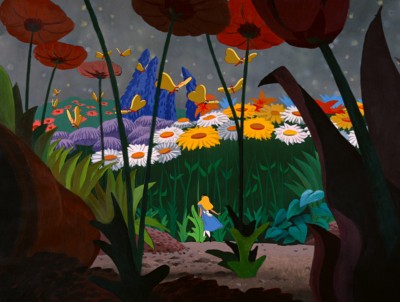 Alice seemed loud and aggressive though some of the coloring seemed inspired, and it’s amazing to see how much of Mary Blair is still in there in some parts – particularly the end of the caterpillar sequence. I found the Cheshire Cat a blessing in the wilderness. A lot is done with little subject matter, and it’s all in the excellent animation, of course. It’s obvious that Alice is a tough character to animate, but she’s done brilliantly. Essentially, she’s the “straight man” for everyone else in the film. She just sits there while the other characters bounce their schtick off of her. As I noted in a past post I am intrigued by the use of shadows in the transitional parts of the film. It works stunningly well , and this device virtually holds a lot of the film together in some odd quiet little way. I’d be curious to see more of this done with other films. You need a director with a big vision watching out for the film as a whole. I’m not crazy about a lot of the wild animation of the many zany characters that seem more cartoon to me than do they feel like Lewis Carrol creatures. There’s an interesting little scene where Alice sits down to cry in the woods. At first, she’s alone, then like Snow White in a similar situation feels sorry for herself and lets go. Little woodland creatures, deer and squirrels and rabbits and birds surround Snow White. Alice greets the odd little cartoon characters which feel as though they’d escaped from Clampett’s Porky in Wackyland. The woodland characters in Snow White serve the purpose of moving the heroine forward in the story to the dwarfs’ cottage. The zanies in Alice just disappear before she stops crying. Essentially, they’re pointless little creatures that offer nothing to the film. Fortunately the Cheshire Cat returns at this point. He fades in just as all the others have faded off.
Alice seemed loud and aggressive though some of the coloring seemed inspired, and it’s amazing to see how much of Mary Blair is still in there in some parts – particularly the end of the caterpillar sequence. I found the Cheshire Cat a blessing in the wilderness. A lot is done with little subject matter, and it’s all in the excellent animation, of course. It’s obvious that Alice is a tough character to animate, but she’s done brilliantly. Essentially, she’s the “straight man” for everyone else in the film. She just sits there while the other characters bounce their schtick off of her. As I noted in a past post I am intrigued by the use of shadows in the transitional parts of the film. It works stunningly well , and this device virtually holds a lot of the film together in some odd quiet little way. I’d be curious to see more of this done with other films. You need a director with a big vision watching out for the film as a whole. I’m not crazy about a lot of the wild animation of the many zany characters that seem more cartoon to me than do they feel like Lewis Carrol creatures. There’s an interesting little scene where Alice sits down to cry in the woods. At first, she’s alone, then like Snow White in a similar situation feels sorry for herself and lets go. Little woodland creatures, deer and squirrels and rabbits and birds surround Snow White. Alice greets the odd little cartoon characters which feel as though they’d escaped from Clampett’s Porky in Wackyland. The woodland characters in Snow White serve the purpose of moving the heroine forward in the story to the dwarfs’ cottage. The zanies in Alice just disappear before she stops crying. Essentially, they’re pointless little creatures that offer nothing to the film. Fortunately the Cheshire Cat returns at this point. He fades in just as all the others have faded off.
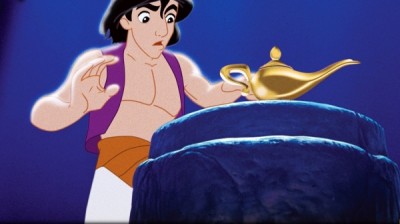 Aladdin has always bothered me. It feels more like a Warner Bros film than a Disney feature. The wild animation and even the style of the animation gives me good reason to feel this way. However, I think I came to terms with that in watching it again (maybe my 12th time?) mixed in with these other movies. The film is what it is and does it well. Eric Goldberg’s genie is a classic combination with the Robin Williams voice over, and Eric gets full use of that voice and the business happening on screen. The material presented has dated some, though not as bad as I expected. How lone before kids don’t know who people like Ed Sullivan are? Though I suppose this is similar to the personalities left over from the celebrity cartoons of the 30′s & 40′s. Mother Goose Goes Hollywood needs a program of its own to tell us who half of those caricatures represent. And they are great pieces of art that Joe Grant did for them. The villain in Aladdin tries hard but he’s not menacing just threatening. There was never anything that I worried about with him, and this feeling goes back to my very first viewing of the film. I do like the tiger in the film, Jasminda’s pet. That cat makes up for the ineffectual father. His character is not anything I can really associate with.
Aladdin has always bothered me. It feels more like a Warner Bros film than a Disney feature. The wild animation and even the style of the animation gives me good reason to feel this way. However, I think I came to terms with that in watching it again (maybe my 12th time?) mixed in with these other movies. The film is what it is and does it well. Eric Goldberg’s genie is a classic combination with the Robin Williams voice over, and Eric gets full use of that voice and the business happening on screen. The material presented has dated some, though not as bad as I expected. How lone before kids don’t know who people like Ed Sullivan are? Though I suppose this is similar to the personalities left over from the celebrity cartoons of the 30′s & 40′s. Mother Goose Goes Hollywood needs a program of its own to tell us who half of those caricatures represent. And they are great pieces of art that Joe Grant did for them. The villain in Aladdin tries hard but he’s not menacing just threatening. There was never anything that I worried about with him, and this feeling goes back to my very first viewing of the film. I do like the tiger in the film, Jasminda’s pet. That cat makes up for the ineffectual father. His character is not anything I can really associate with.
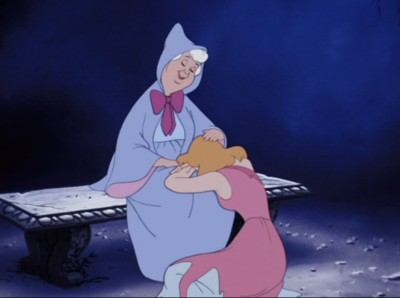 Cinderella is a very interesting film. I go into it thinking I hate it and get completely tied up with the extraordinary pacing of the film. Every scene is so exact and tight. They really knew what they were doing. I’m not the biggest fan of the human animation, but at the same time I’m in awe of it. It isn’t really rotoscoping, but it’s so beautifully pulled off the live action they shot, that it feels completely fresh. The cartoon animals play off the humans as the dwarfs did in Snow White. They look as they they come from different films and the style of animation is so different. The set pieces are exquisite. That entire piece with Cinderella locked in her room, the animals fighting to release her all those stairs away and the final reveal of her own glass slipper. It’s so beautifully melodramatic and so perfectly executed. Yes, this is an odd film for me to watch.
Cinderella is a very interesting film. I go into it thinking I hate it and get completely tied up with the extraordinary pacing of the film. Every scene is so exact and tight. They really knew what they were doing. I’m not the biggest fan of the human animation, but at the same time I’m in awe of it. It isn’t really rotoscoping, but it’s so beautifully pulled off the live action they shot, that it feels completely fresh. The cartoon animals play off the humans as the dwarfs did in Snow White. They look as they they come from different films and the style of animation is so different. The set pieces are exquisite. That entire piece with Cinderella locked in her room, the animals fighting to release her all those stairs away and the final reveal of her own glass slipper. It’s so beautifully melodramatic and so perfectly executed. Yes, this is an odd film for me to watch.
I didn’t make it to The Lion King. I’ve seen that about half a dozen times in the last few months so preferred watching my soap opera – Downton Abbey.
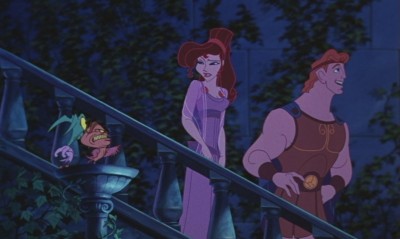 Watching these films back to back to back like this sort of lessens them but at the same time one is overwhelmed by the amazing craftsmanship held so high for so long. For years I felt the modern films, Aladdin, Beauty and the Beast, Hercules were lesser efforts compared to what the “masters” did. But now I’m sure they’re every bit as good as some of the later classics. No, I don’t think Snow White, Pinocchio, Fantasia, Dumbo and Bambi can be beaten today, but the new films are definitely equal to Lady and the Tramp, Cinderella, Alice In Wonderland and anything later than that. (I actually think Sleeping Beauty is in a class of its own and haven’t seen the equal to that from the more recent people. Actually, I take that back. I think Prince of Egypt is right up there. That’s a magnificent film, and it’s one I’d like to discuss more in depth sometime soon.)
Watching these films back to back to back like this sort of lessens them but at the same time one is overwhelmed by the amazing craftsmanship held so high for so long. For years I felt the modern films, Aladdin, Beauty and the Beast, Hercules were lesser efforts compared to what the “masters” did. But now I’m sure they’re every bit as good as some of the later classics. No, I don’t think Snow White, Pinocchio, Fantasia, Dumbo and Bambi can be beaten today, but the new films are definitely equal to Lady and the Tramp, Cinderella, Alice In Wonderland and anything later than that. (I actually think Sleeping Beauty is in a class of its own and haven’t seen the equal to that from the more recent people. Actually, I take that back. I think Prince of Egypt is right up there. That’s a magnificent film, and it’s one I’d like to discuss more in depth sometime soon.)
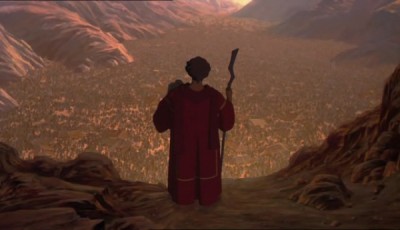 Oh, of course, this is all my own opinionated nonsense. Someone else would have a completely different list. I’m, obviously, leaving cg films out of this discussion. To be honest, I can’t even find a story there that I think measures up to most of the Disney classics. I’m also not thinking much about non-Disney works, but there’s an obvious reason for that. However, some of those Dreamworks 2D films are exceptional and deserve a lot of attention. Attention they haven’t received. Spirit has stunning animation, as do a number of others. They really need a bit of time.
Oh, of course, this is all my own opinionated nonsense. Someone else would have a completely different list. I’m, obviously, leaving cg films out of this discussion. To be honest, I can’t even find a story there that I think measures up to most of the Disney classics. I’m also not thinking much about non-Disney works, but there’s an obvious reason for that. However, some of those Dreamworks 2D films are exceptional and deserve a lot of attention. Attention they haven’t received. Spirit has stunning animation, as do a number of others. They really need a bit of time.
I had some bigger thoughts brought on by watching them all, but I’ve gone on too long already. So I’ll let this rambling post fizzle out. Hope you don’t mind, but I’m getting to enjoy writing these diatribes.
Commentary &Daily post 05 Jan 2013 08:20 am
Animator names?
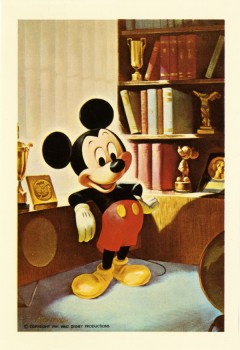 I’ve been an animation fan forever. Back in the fifties (when I wasn’t yet in my teens) I wrote fan letters to Joshua Meador, Bill Justice, and Art Riley. I don’t know if any of them ever received any of my letters, since I always got back a 4″x6″ postcard from Walt Disney thanking me. Mind you, these cards were always interesting and different, so I’m not sorry to have received them.
I’ve been an animation fan forever. Back in the fifties (when I wasn’t yet in my teens) I wrote fan letters to Joshua Meador, Bill Justice, and Art Riley. I don’t know if any of them ever received any of my letters, since I always got back a 4″x6″ postcard from Walt Disney thanking me. Mind you, these cards were always interesting and different, so I’m not sorry to have received them.
In the sixties, Mike Barrier‘s Funnyworld Magazine opened the world to interviews with some real animators. Then you’d start to see similar articles in the likes of Millimeter or Film Comment. Chuck Jones and Tex Avery got lots of attention. I saved and cherished those issues. Hell, I just about memorized them. ASIFA East brought Bob Clampett and a dozen other animators from Yoji Kuri to Frank Thomas & Ollie Johnston to our little New York corner of the world.
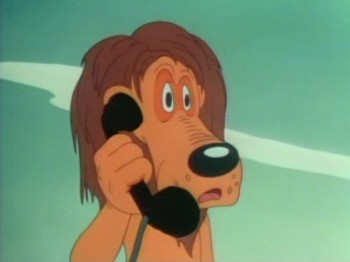 The point is that we got to know who a lot of animators were.
The point is that we got to know who a lot of animators were.
I could tell what scenes Ollie Johnston had done from those that Milt Kahl had done; I can easily identify Bobe Cannon‘s work from Ken Harris‘. (Can anyone but Cannon have drawn with such beautifully rounded lines as can be seen in the lion on the right?
No, that’s purely his work, and it’s there from the earliest right through to Moonbird. Just brilliant!)
{Check out this whole post on John Kricfalusi‘s site in 2006. Gorgeous.}
It became, really, the era of the animator. Many of them were deified by others like me, and deservedly so, even though others remained in obscurity. Watching stars like Dick Williams bring Harris and Hubley and Babbitt to London to train his staff brought fame to the little British studio. Dick soon brought as many famous animators to Raggedy Ann in New York. A star-studded staff assembled, for the first time, for their celebrity and ability and personality. (Star animators rather than star voices. Too bad there was no star writer.)
And Jim Tyer! There’s a whole cult of people who rally around Tyer’s work, and that pleases me. No one I knew, when I was a child, had any idea who Tyer was, but I searched every Mighty Mouse show on Saturday morning TV for a cartoon that had something of Tyer’s work on it. And of course, if you’re going to mention Tyer you have to talk about Rod Scribner. Bob Clampett wouldn’t be the same without Scribner’s scenes. One was East coast, one was West. One distorted the character off all semblance of drawing rules, the other distorted beyond belief (but probably – in his own way – kept the masses the same.)
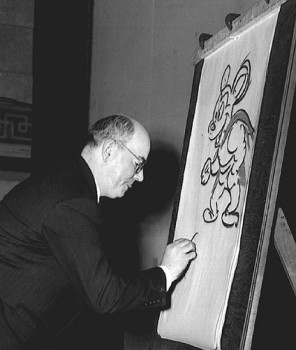
We can all spot his work a mile off.
It’s Jim Tyer
This same rise to fame continued with some of the new guard. Glen Keane and Andreas Deja led a league of youngsters such as Eric Goldberg and Ruben Aquino and many others to small fame within the industry as the new golden era came to the Hollywood studios.
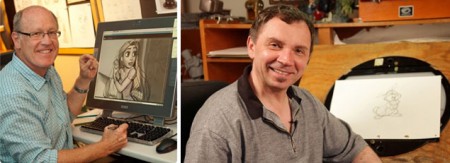
Meed I identify? Glen Keane & Andreas Deja.
Any good student can list off dozens of such names and can tell you what scenes they’ve done. The point that I’m ultimately getting to is that they’re all 2D animation. Where are the cgi lists of names? Where are the heroes from Toy Story and Monsters Inc. Not the directors. We all know who Brad Bird and Pete Doctor are; we know John Lasseter from Andrew Stanton, but who actually did the animation of some of those many scenes.
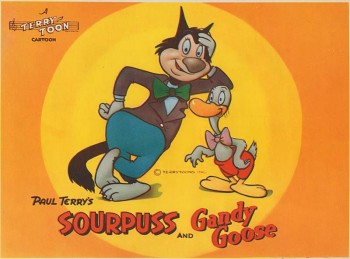 The names are on the credits just as Frank Thomas‘ name is on the credits of Bambi. But I can tell you immediately that Thomas did the scenes of Bambi ice skating, yet I don’t know who did the scene of Woody getting resentful, as Buzz Lightyear gets attention from the other toys. I know that Fred Moore did the scene of Lampwick turning into a donkey in Pinocchio, but I don’t know who did Merida’s mother, Elinor, in Brave. The scenes where the mother is transformed into and acts as a bear are beautifully animated, but the origin of those scenes seem anonymous. I don’t have the slightest clue as to who did them.
The names are on the credits just as Frank Thomas‘ name is on the credits of Bambi. But I can tell you immediately that Thomas did the scenes of Bambi ice skating, yet I don’t know who did the scene of Woody getting resentful, as Buzz Lightyear gets attention from the other toys. I know that Fred Moore did the scene of Lampwick turning into a donkey in Pinocchio, but I don’t know who did Merida’s mother, Elinor, in Brave. The scenes where the mother is transformed into and acts as a bear are beautifully animated, but the origin of those scenes seem anonymous. I don’t have the slightest clue as to who did them.
Grayson Ponti is one of the few who have sites that have praised some excellent cg work, and I can’t be thankful enough for his attention. Check out this post for a sample, but that was written a couple of years ago. We need more frequency and more currency.
I’ve made this complaint before. I talked about Glen Keane‘s work and got lots of hate mail. I said I was trying to learn who did which scenes so that I would know the better animators from the average ones. There were a couple of people who commented on my site and led me to a name or two. But not much changed, not really. I’d very much like it if some of you would comment here and tell me of animators I should be watching. Give me names of people who you think have done some brilliant work in cg films. Tell me the animator, tell me the scenes and I’ll try to offer some appropriate attention.
I don’t have access into the world of the cg artists and animators. I do know a few 2D artists who are working within that world, but it’s the animator who works exclusively in the medium I want to notice and give a little attention to. I need your help. I cannot do it if I don’t know who those animators are at Pixar, Dreamworks, Blue Sky, Disney, Sony and other places. If I don’t know their work I can’t give them credit.
Honestly, for me this year the best animated scenes were many of those of Richard Parker in The Life of Pi. Rhythm and Hues did the work.
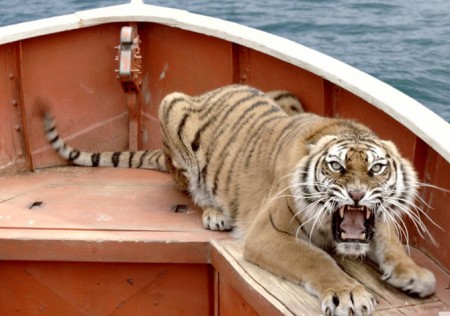
This scene knocks me out every time I see it. Pi is trying to
train the tiger, Richard Parker, and the tiger kneads the wood
of the boat (as any house cat would knead a blanket or its
owner, while accepting the comments of his teen overseer.
I’ve contacted the EFFX house offering to give them any attention on my Blog that they’d like from me. Publicity is publicity. (Of course, there’s been no response, surprise, surprise.) Regardless I’m going to continue promoting this film. I love it. But I’d like to add animator names and key art people responsible for the great work. I need them to contribute to get that part right.
I was also equally astounded by most of the work of the Gollum in The Hobbit. One is straight cgi; the other is what used to be called “motion capture” and is now something much much more. There’s real feeling in both those films, and in both those films those characters exist. There can be no question of it.
Now, I’d like to know who is actually doing the creative work. behind the Pixar, Blue Sky and Dreamworks films. I want to talk with people from SONY or other studios. I have a lot of questions and I want to give focus to some individuals who deserve it.
Curran W. Giddens worked on Horton, Cars 2 and Monsters University. What can he tell me about animation?
Raffaella Filipponi worked on The Croods, Shrek and Over the Hedge. She’s freelanced a lot and is that how theses studios work?
Dave Hardin worked on I am Legend, Alice in Wonderland and Turbo. Can he learn the “art” part moving from job to job?
These people were chosen at random. I don’t know their work even though I’ve seen it. Is there a point when THAT will turn around? Do you have to keep on the move to keep working? Is it time to start promoting responses? We’re not working at Disney on a 15 year job that allows you to move from feature to feature without it hurting you attitude, never mind your work?
Perhaps you think (as I sometimes suspect) that no single person can be given credit for “animating” since so many people have their hands on the steering wheel trying to move those characters forward. If so, say that. If you think there’s a team of people that work wonderfully together, I’d like to know. Essentially, I’d like your help continuing this post. If you don’t want it to be in the comment section of this article but would like to add to the follow-up post I’m going to do, email me. msanimation@aol.com is the best address; it’s the place I check most often. Write as short or as long as you like. If I have to edit it I will, and I’ll let you know when it’ll be posted so you can see it as soon as possible.

